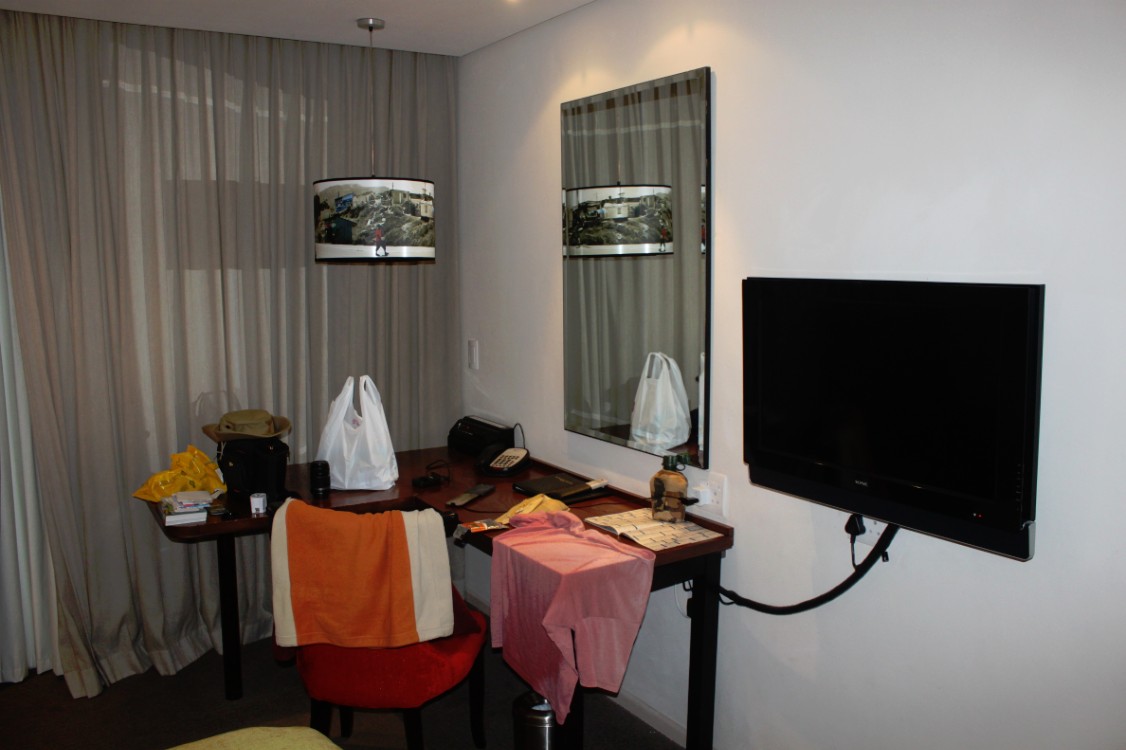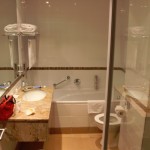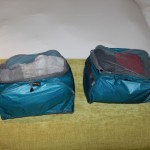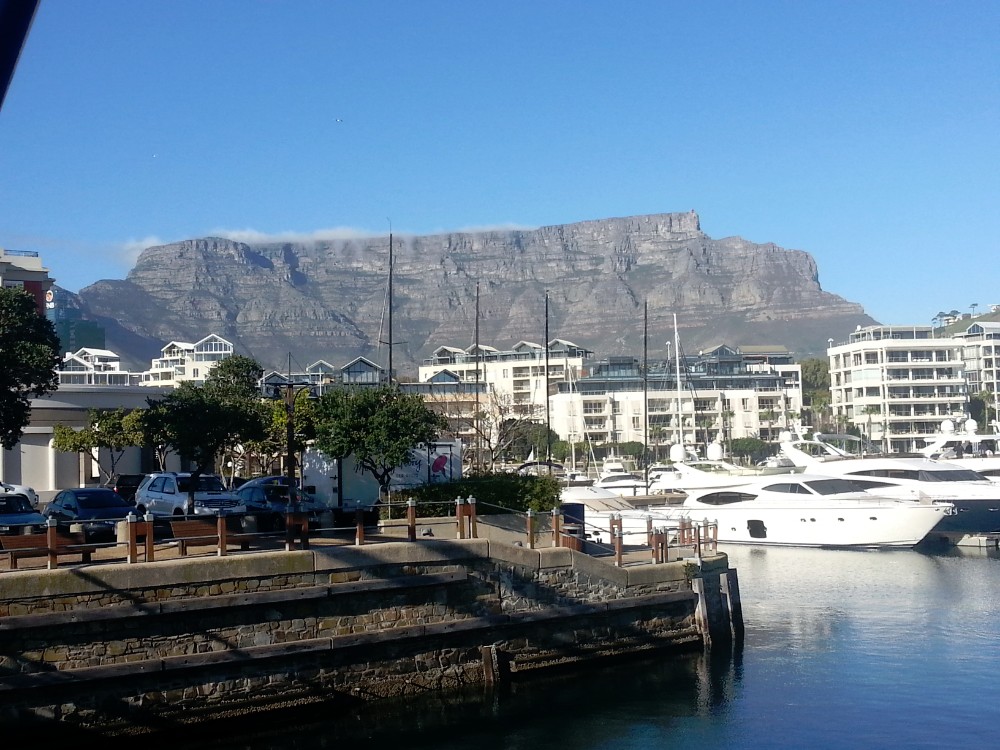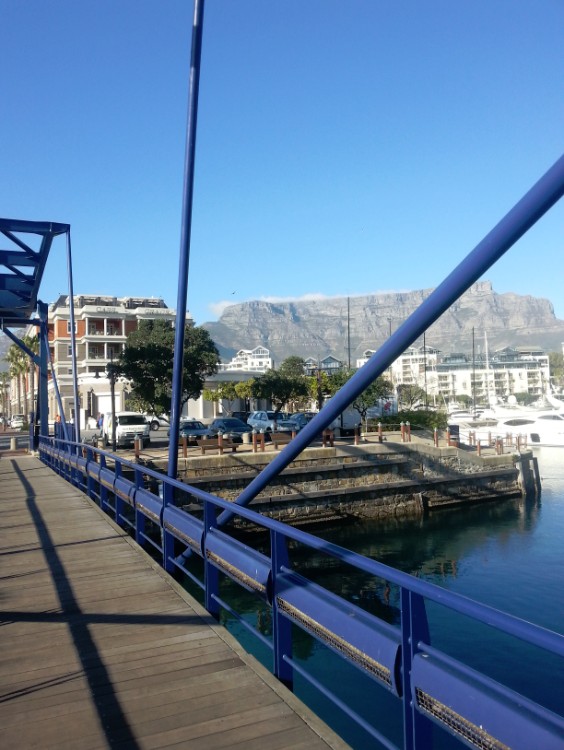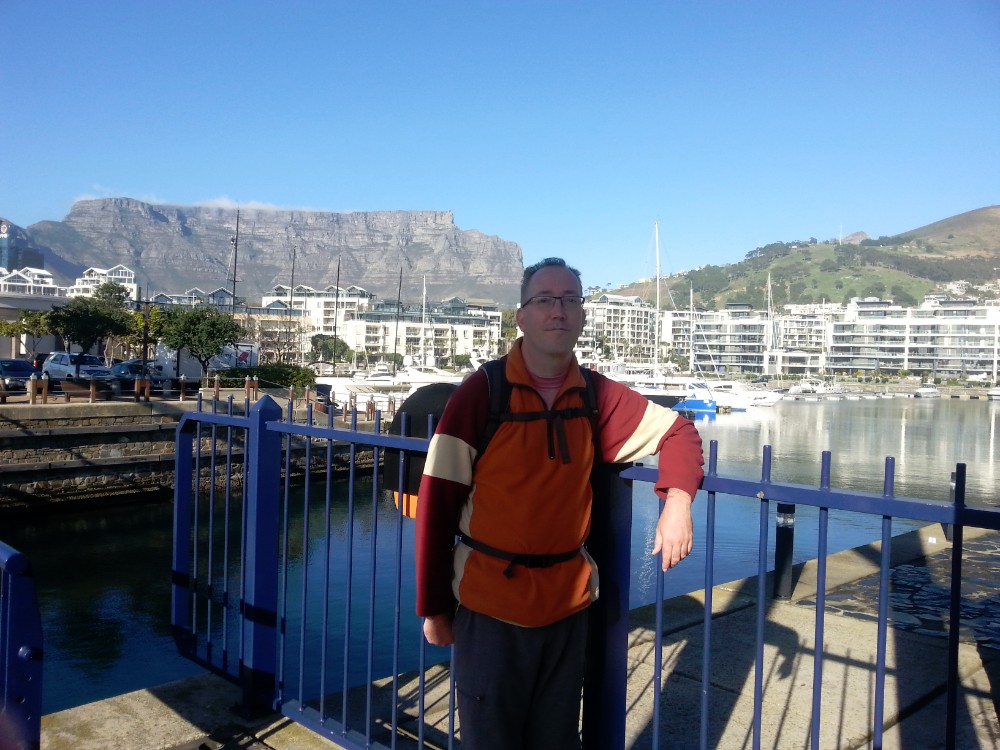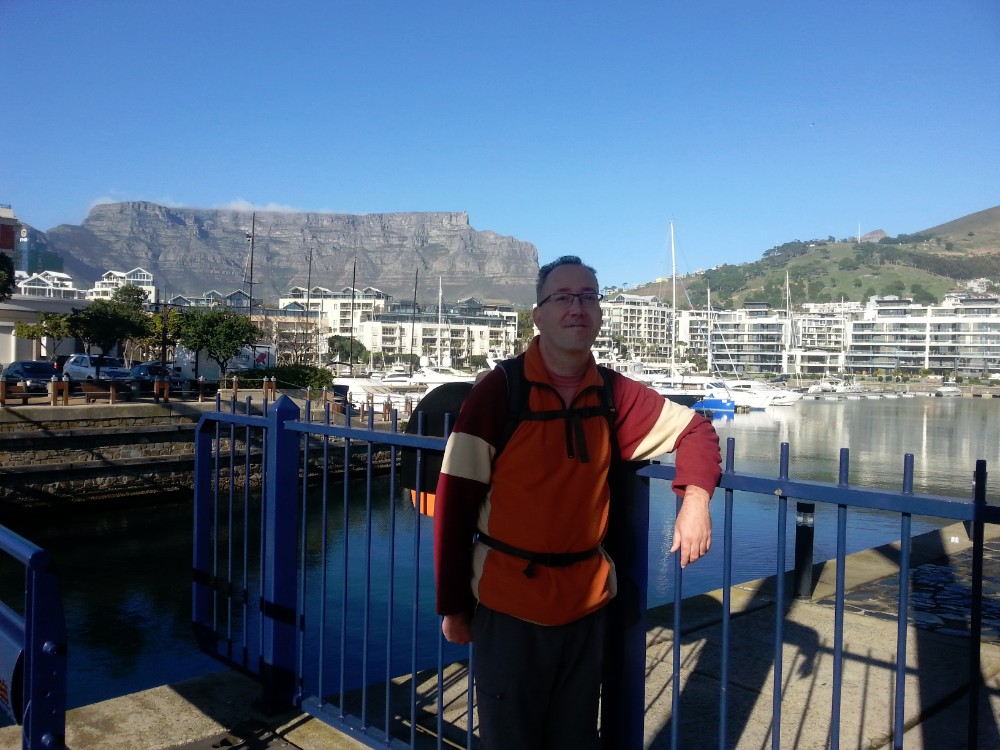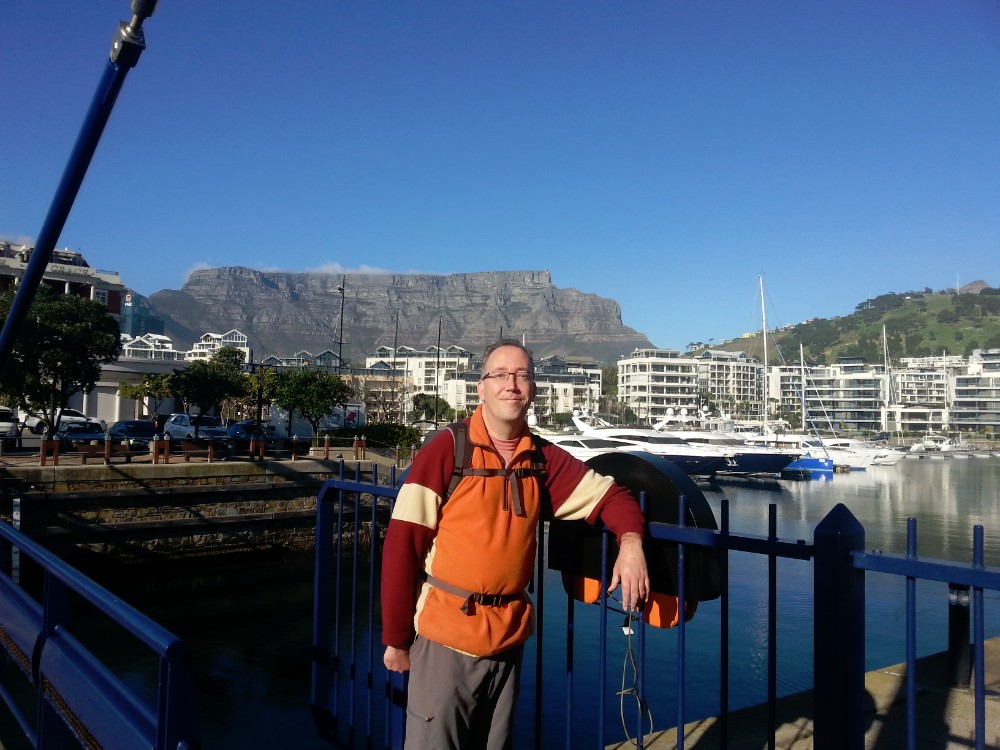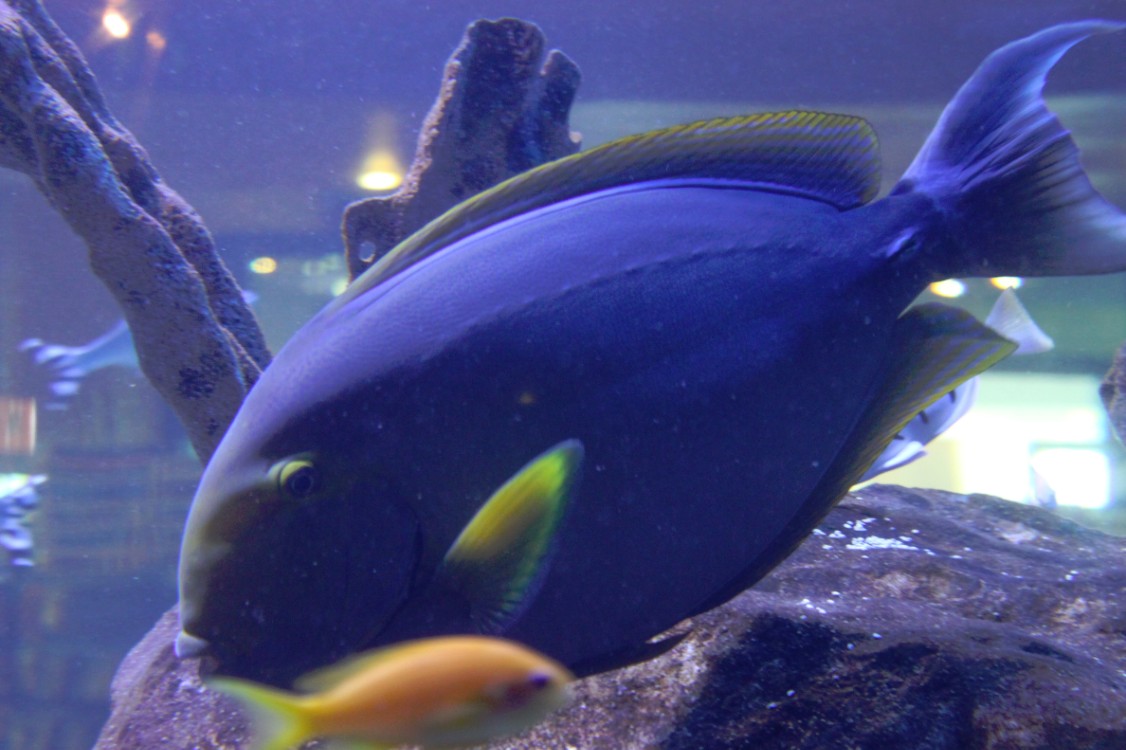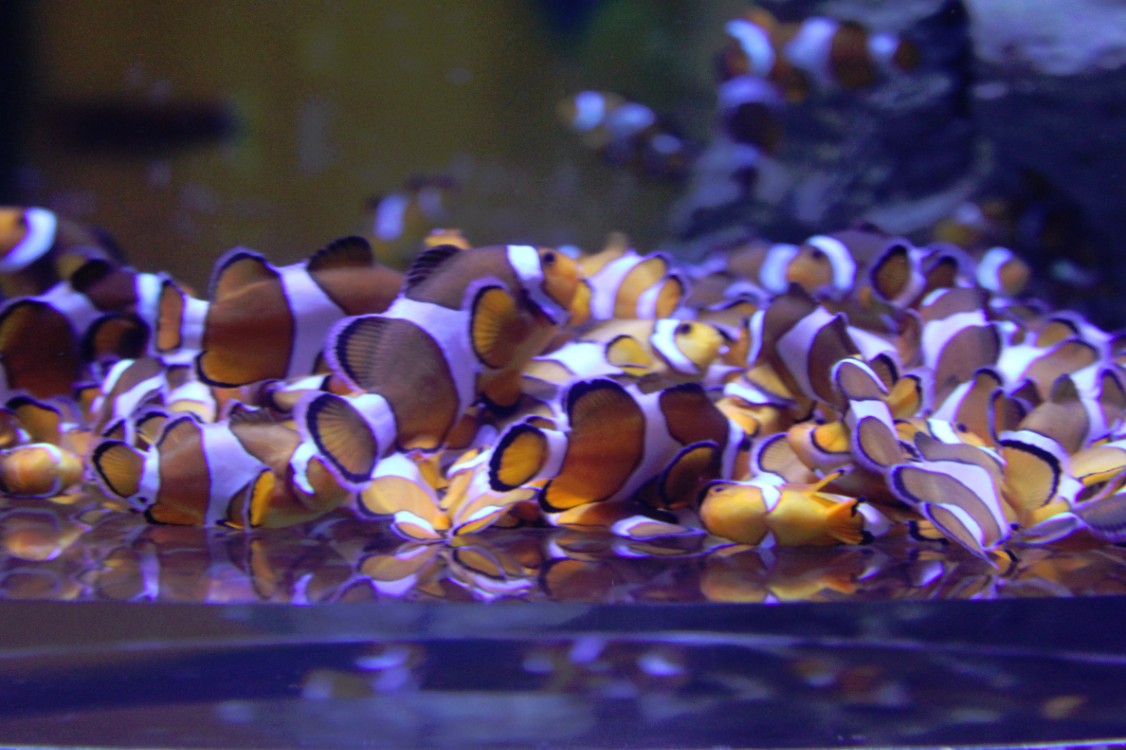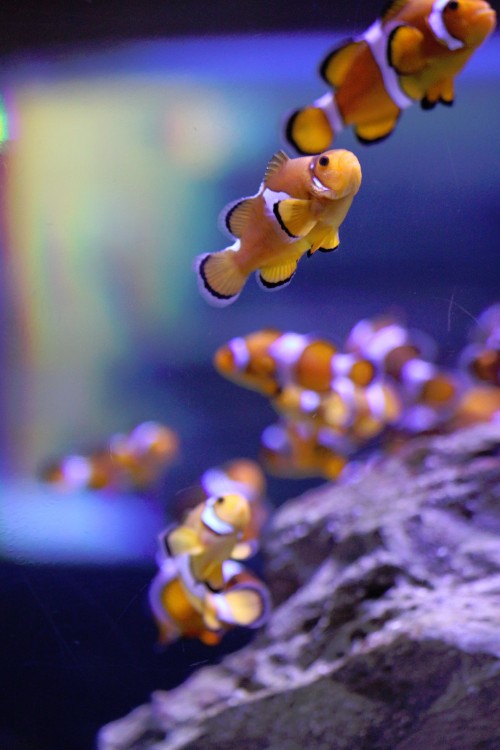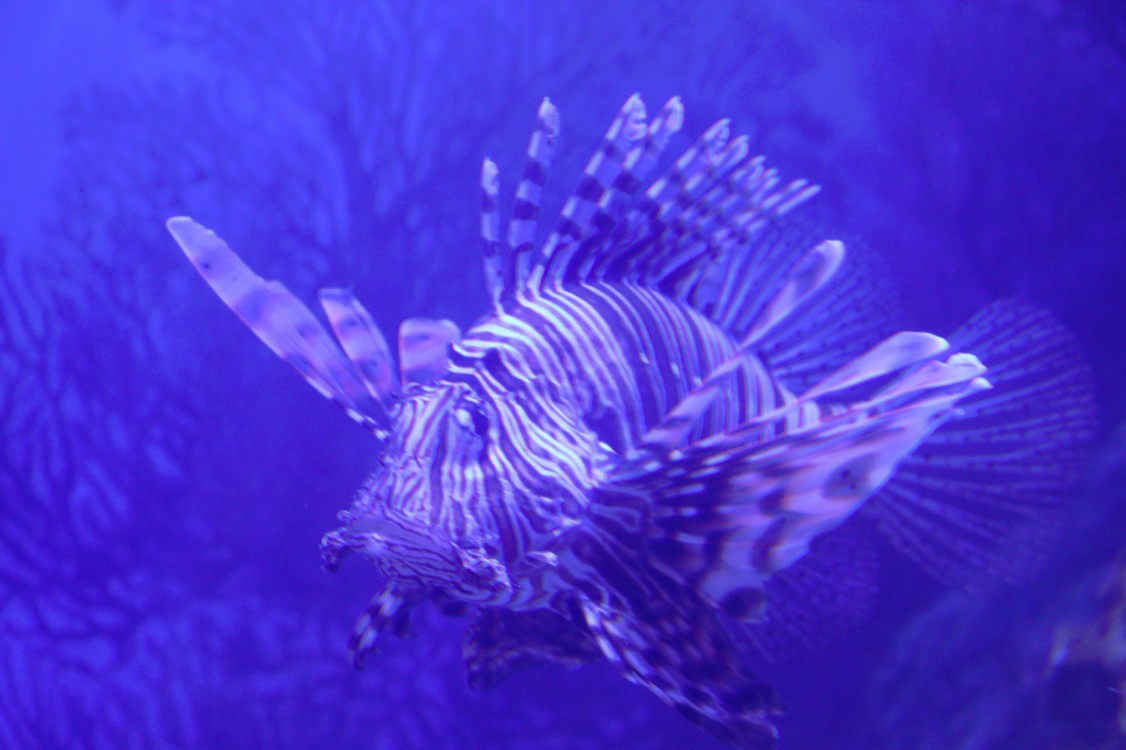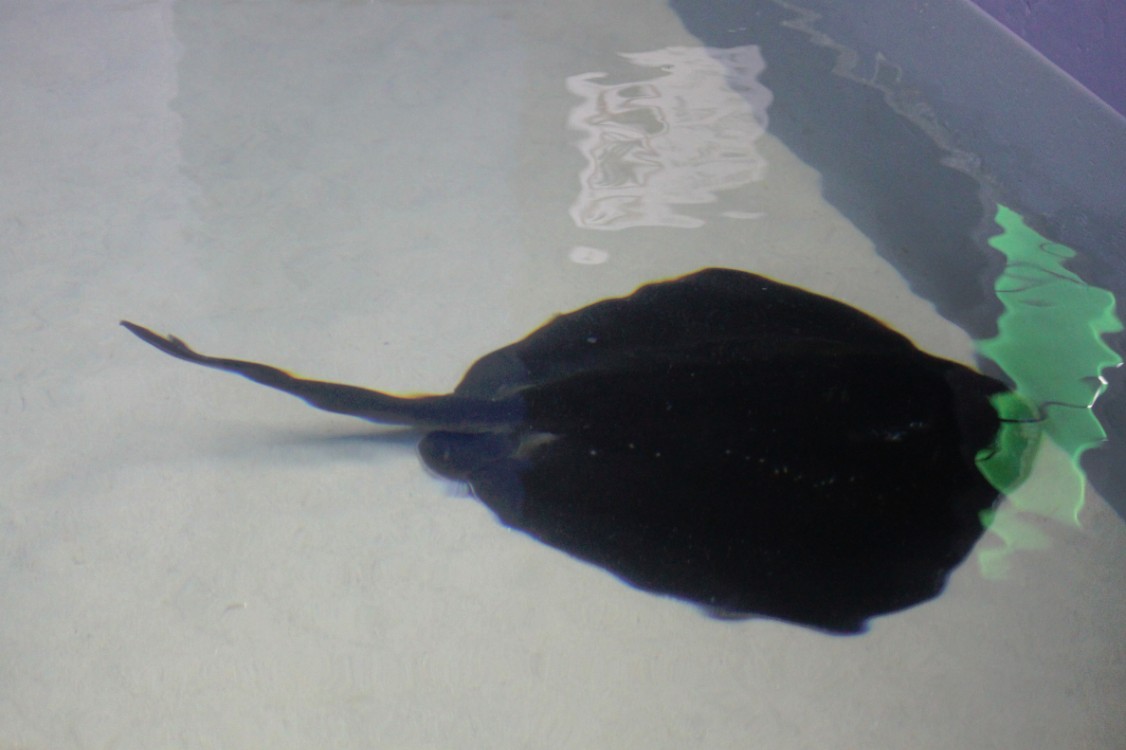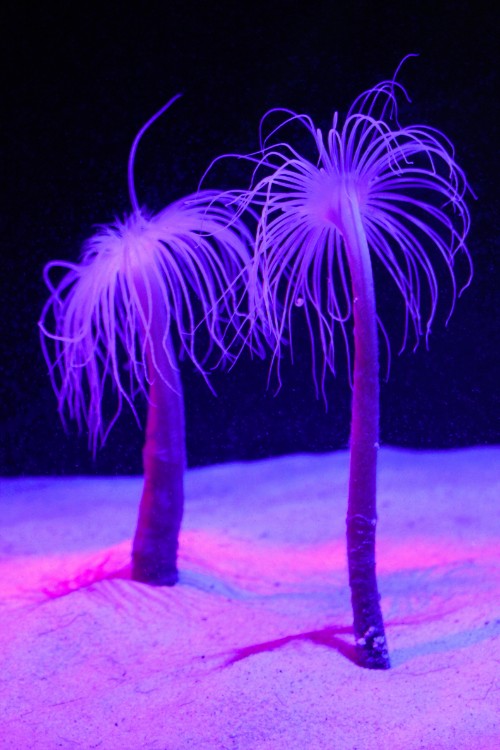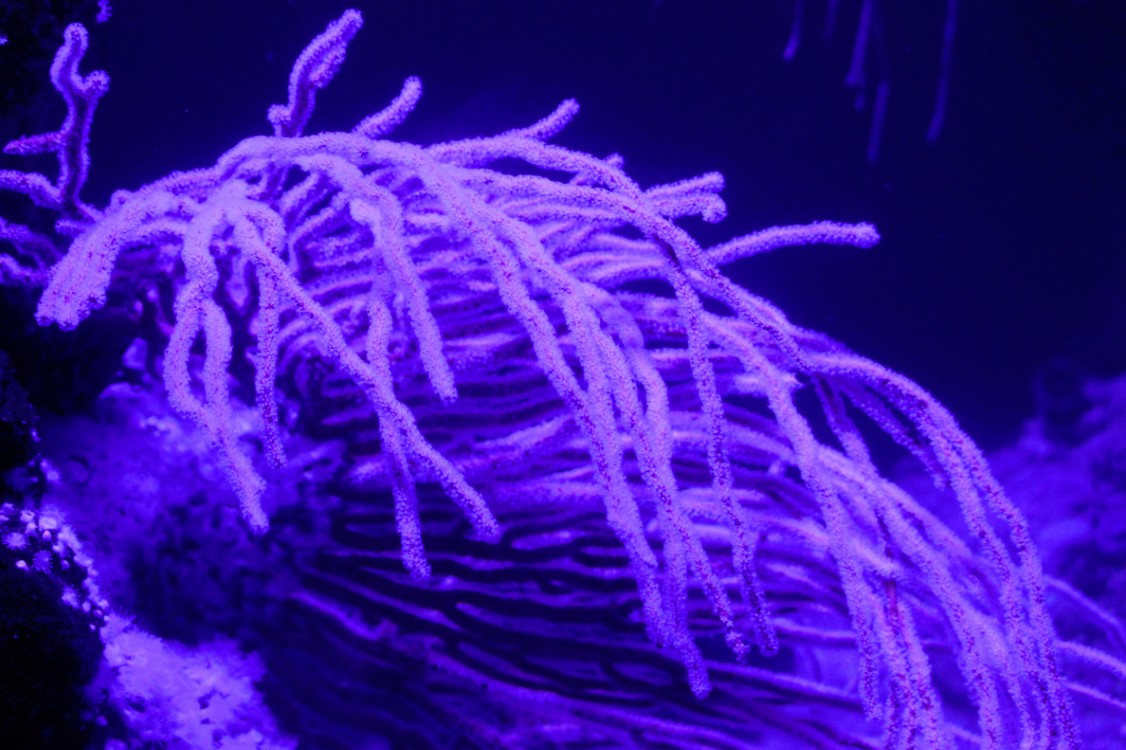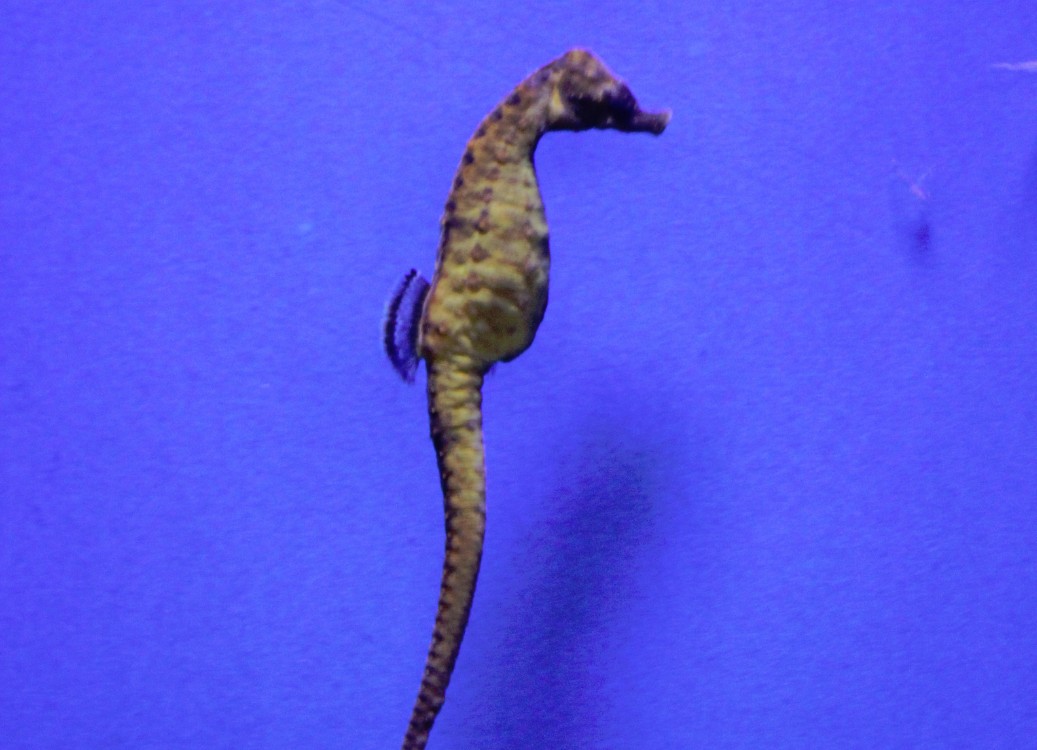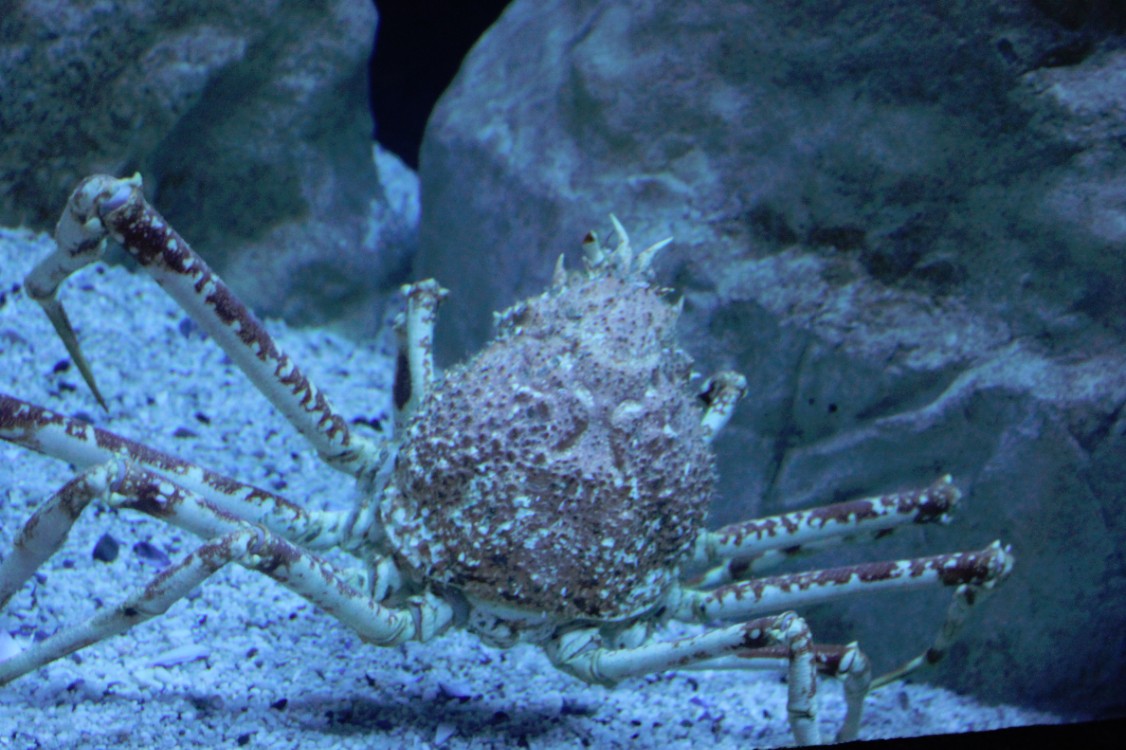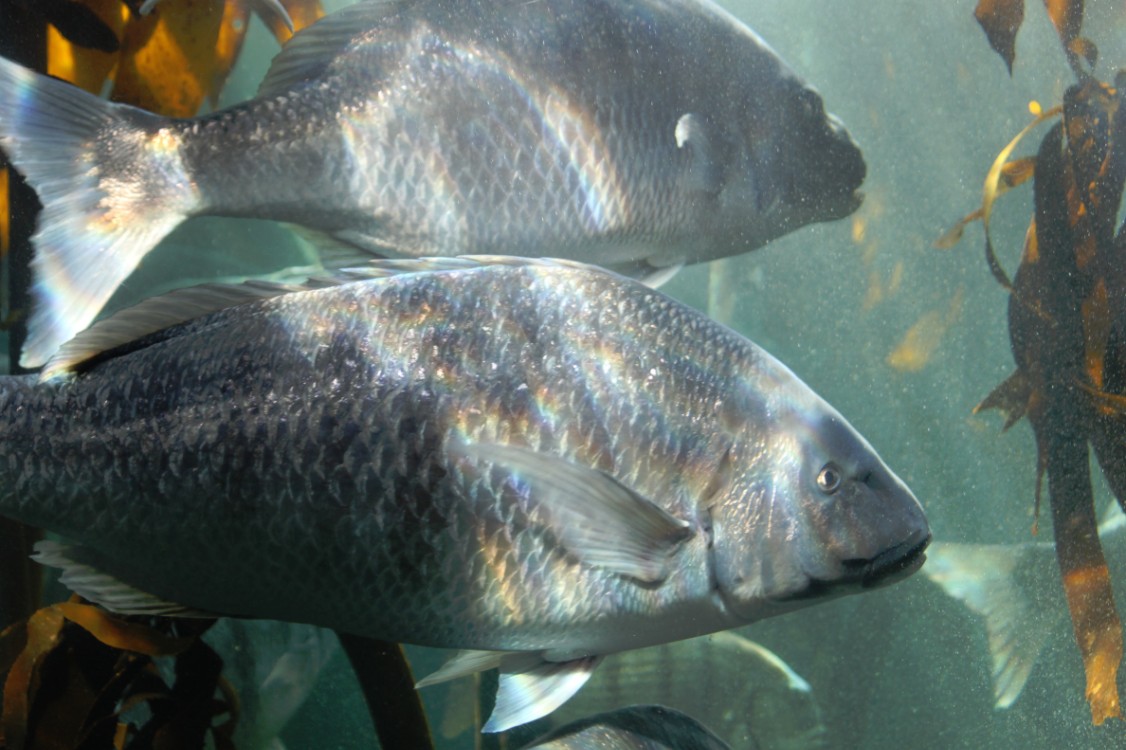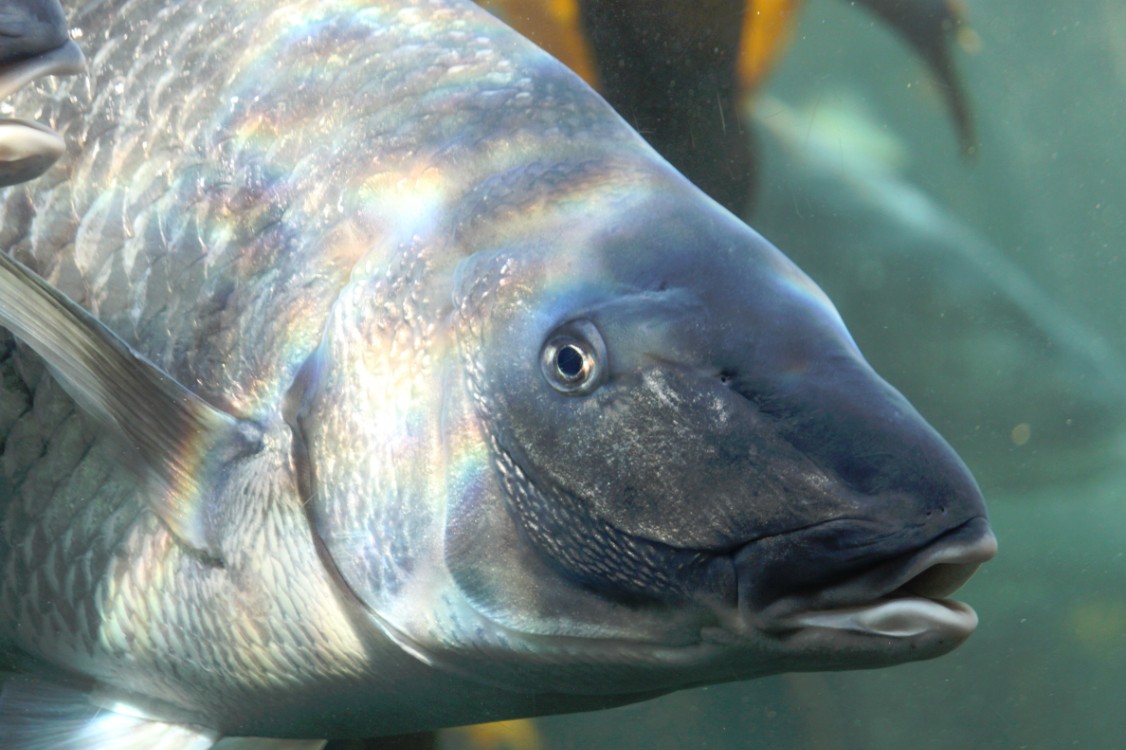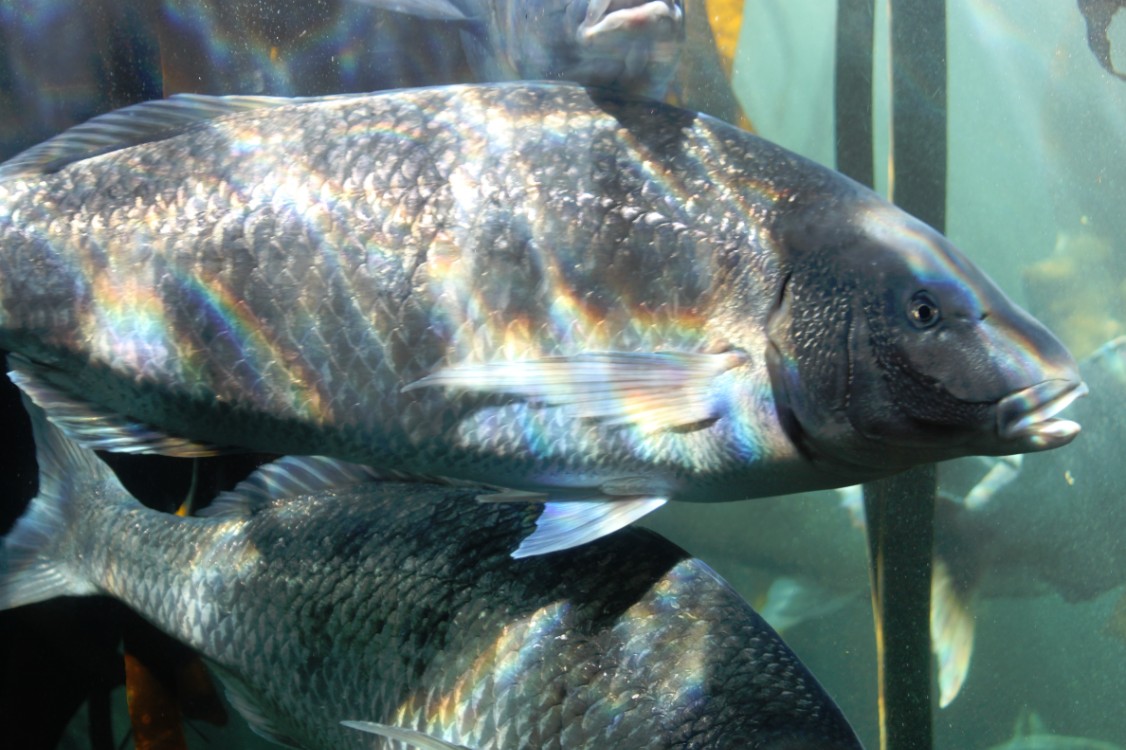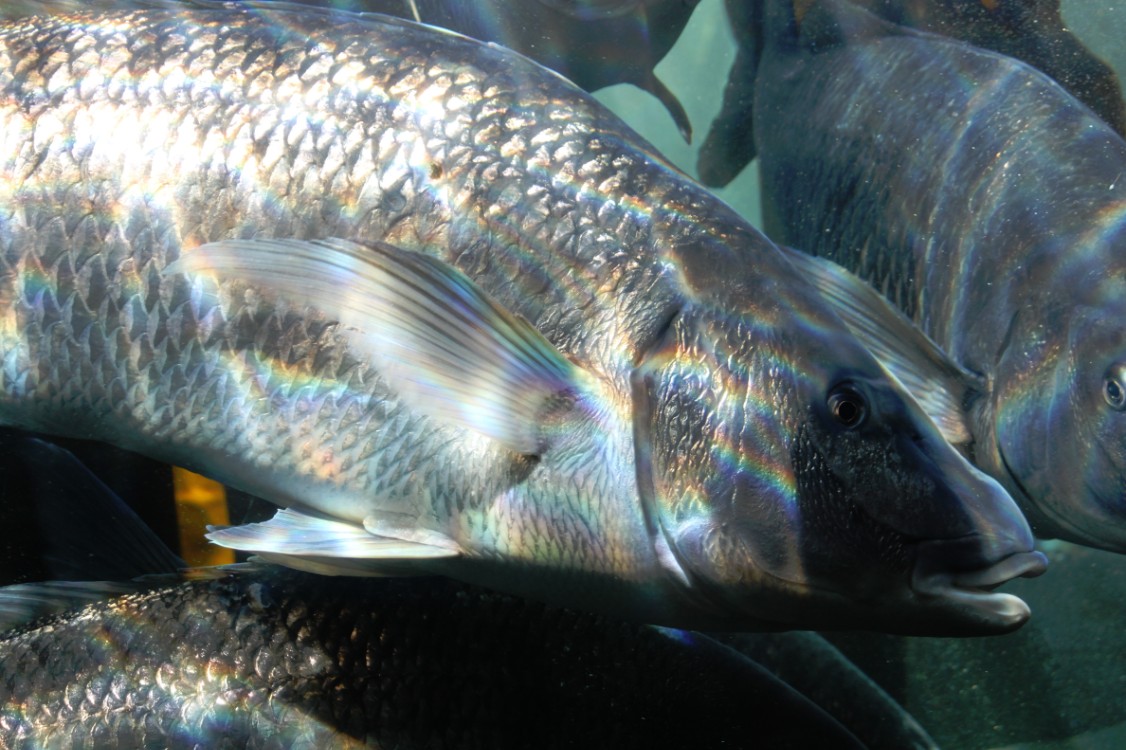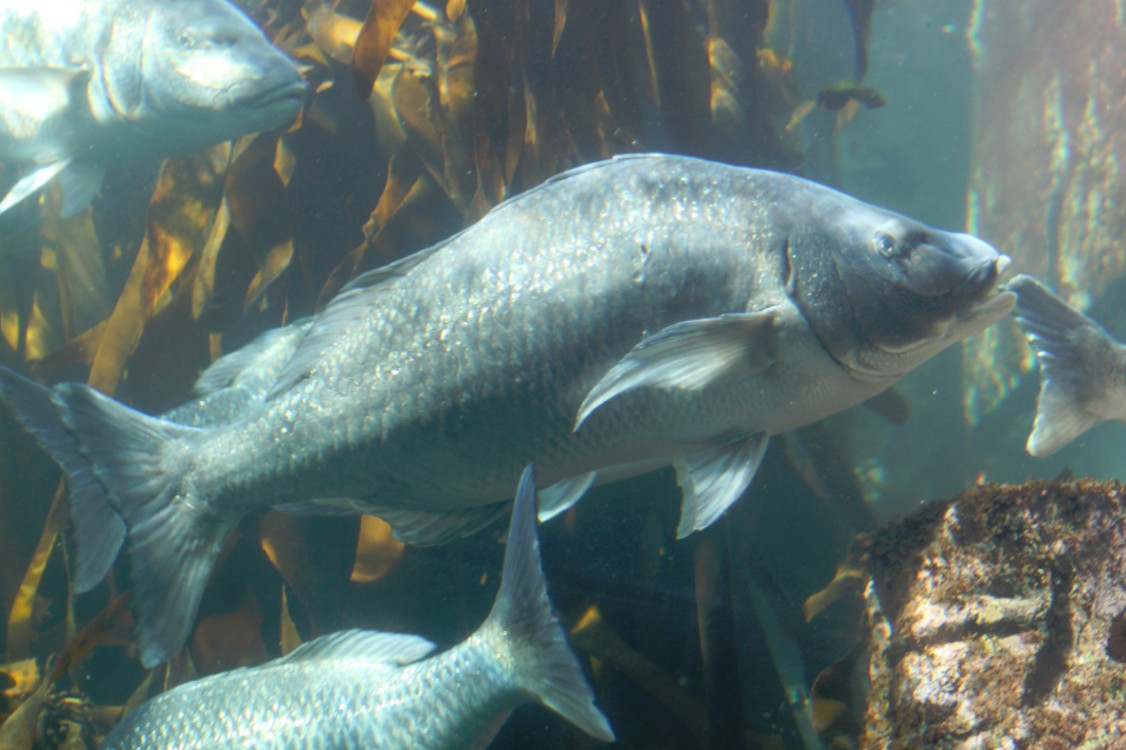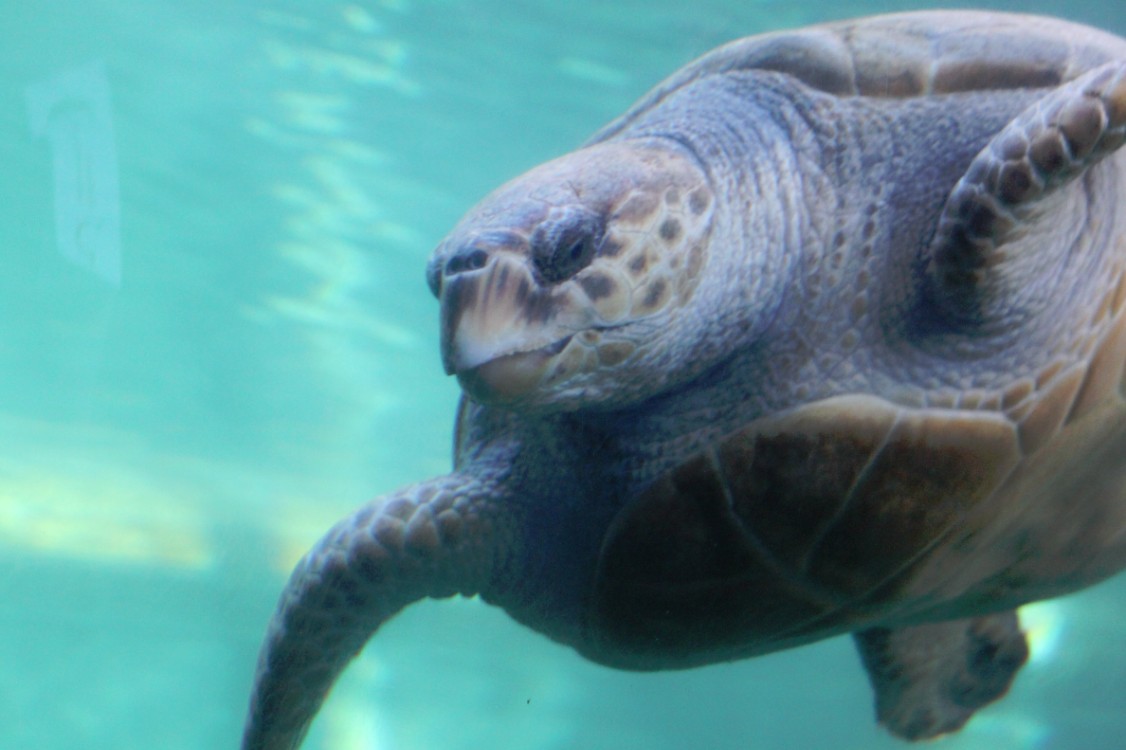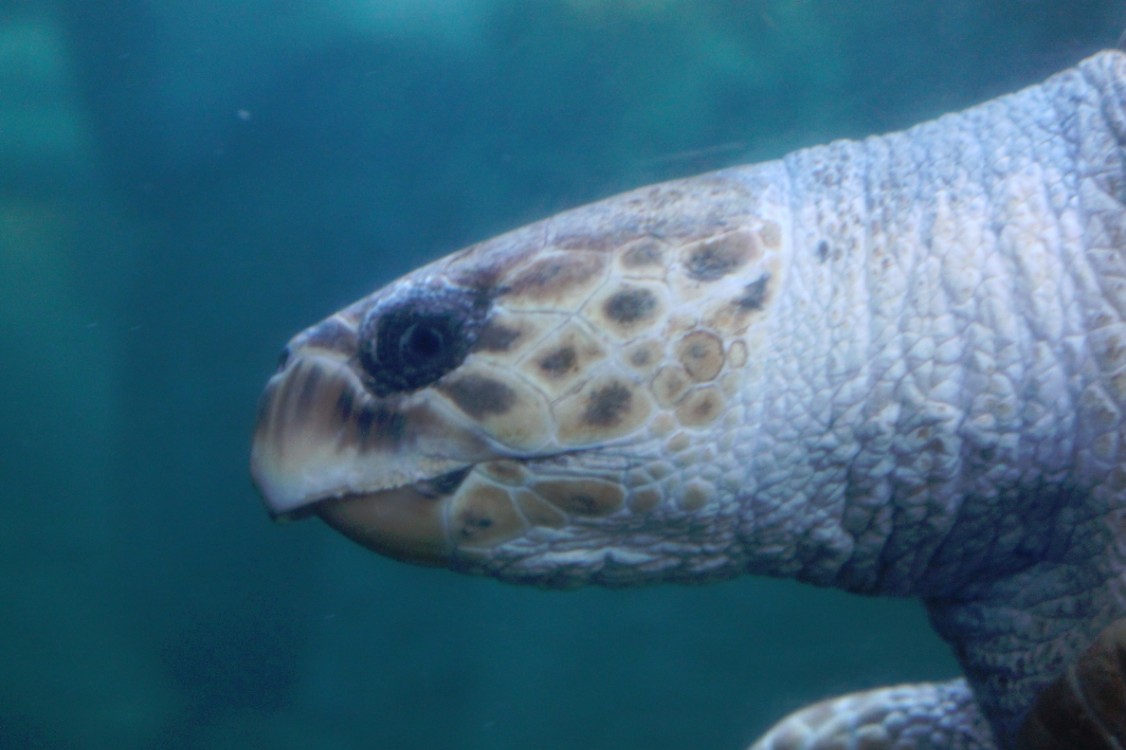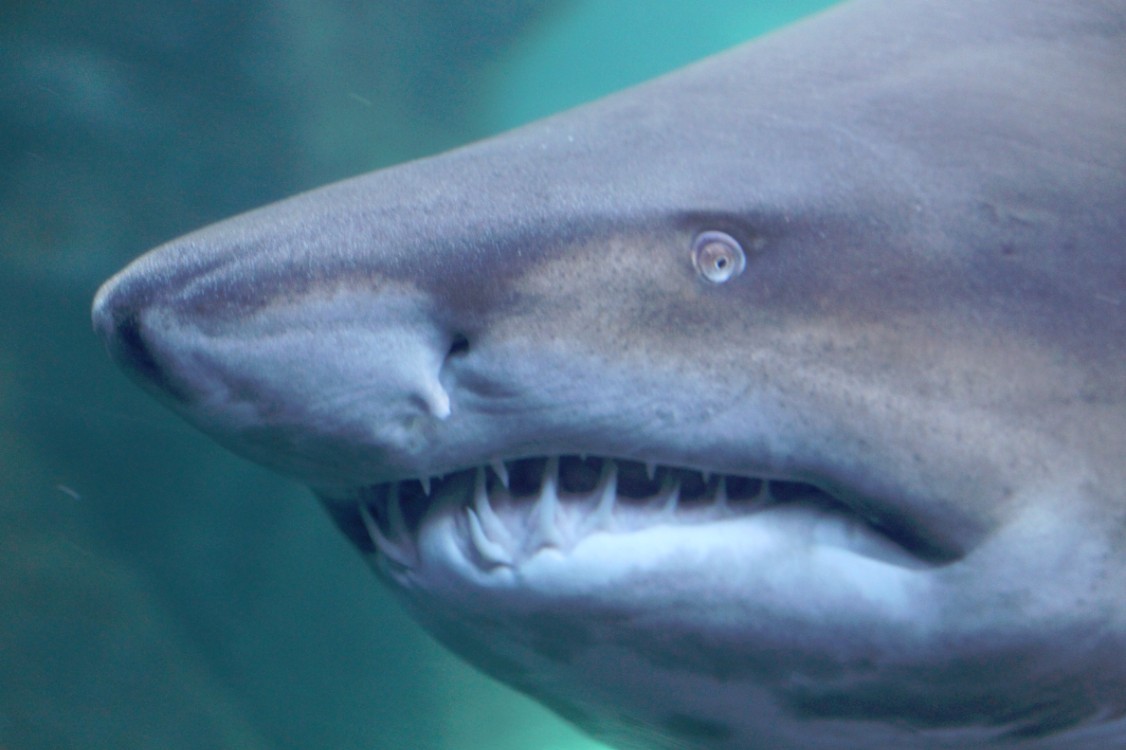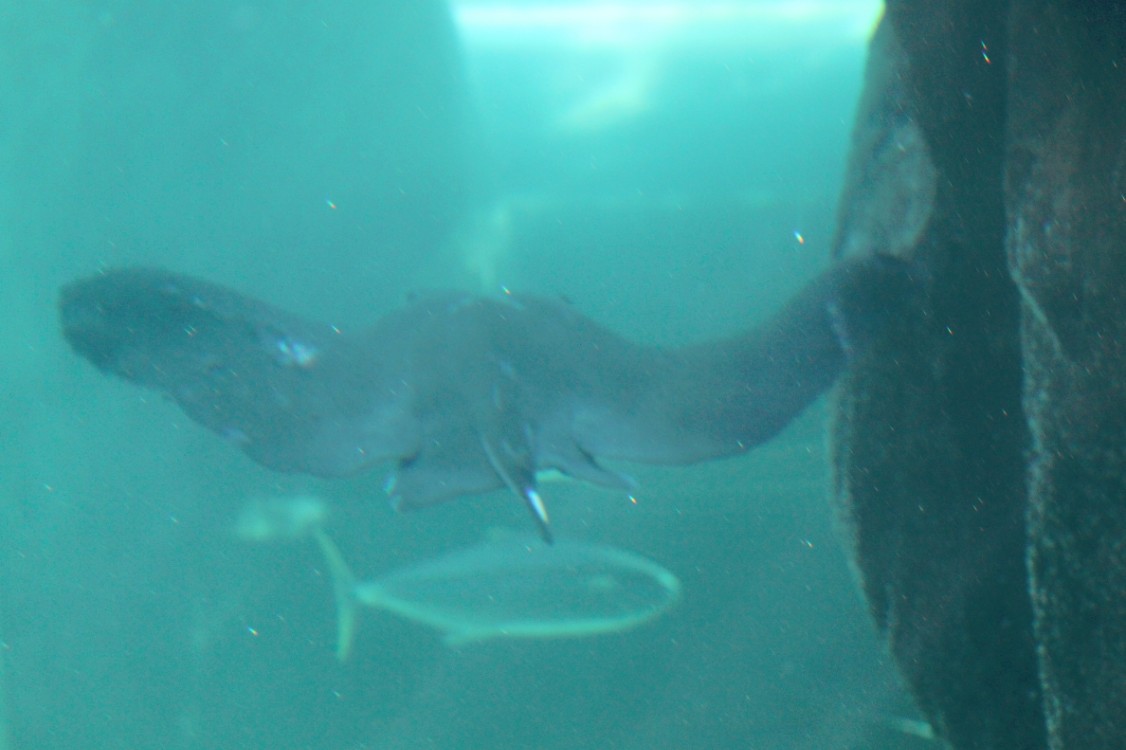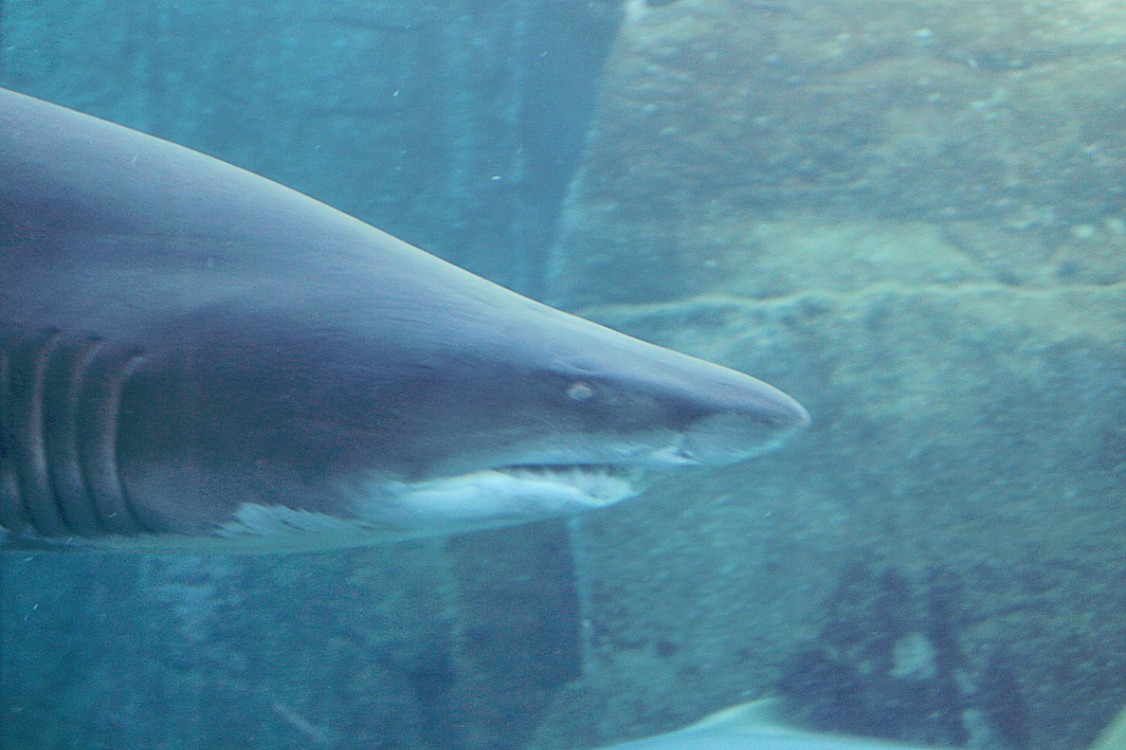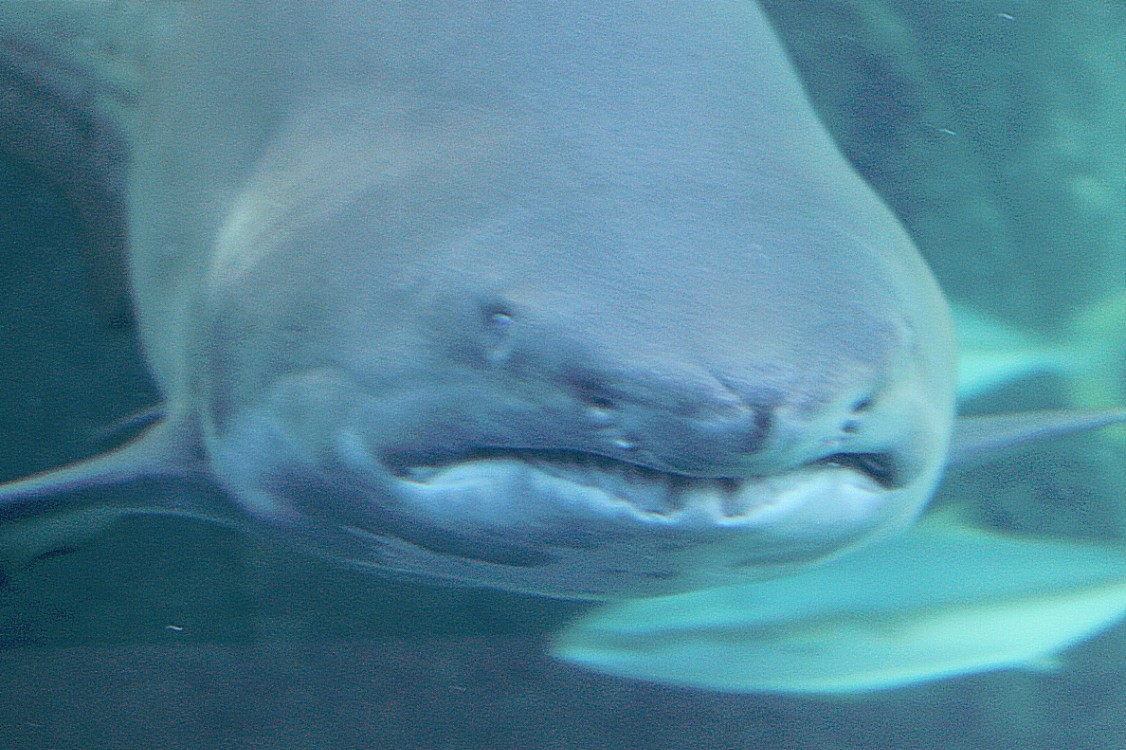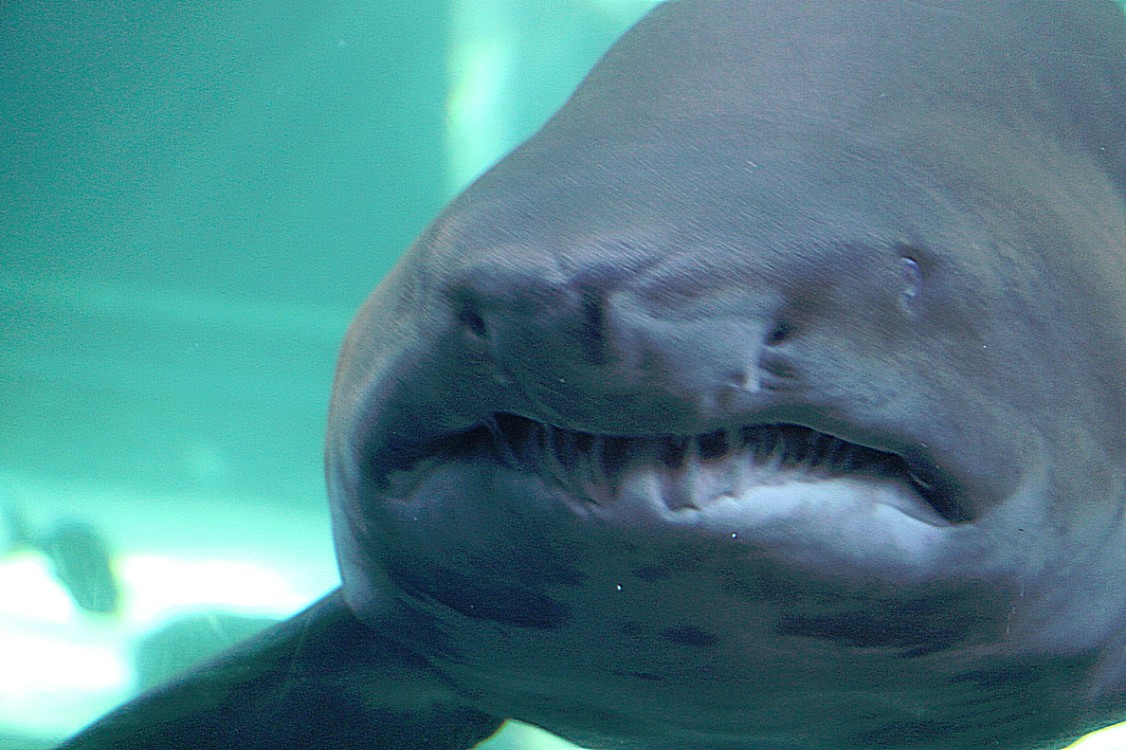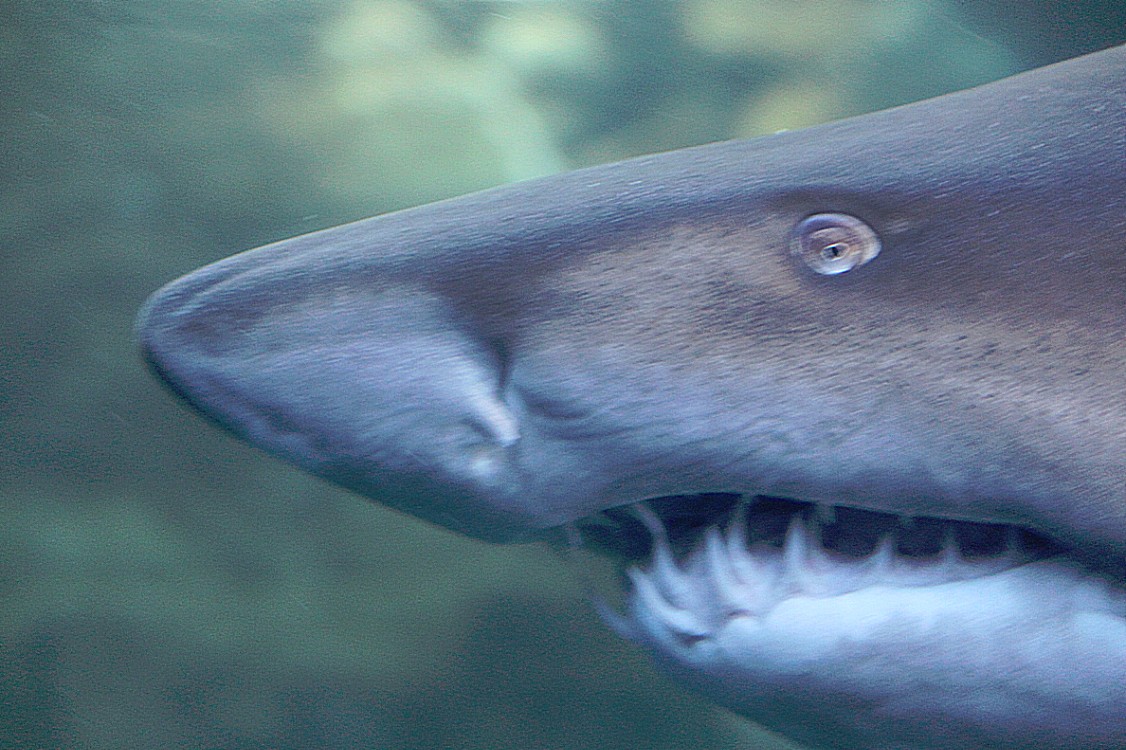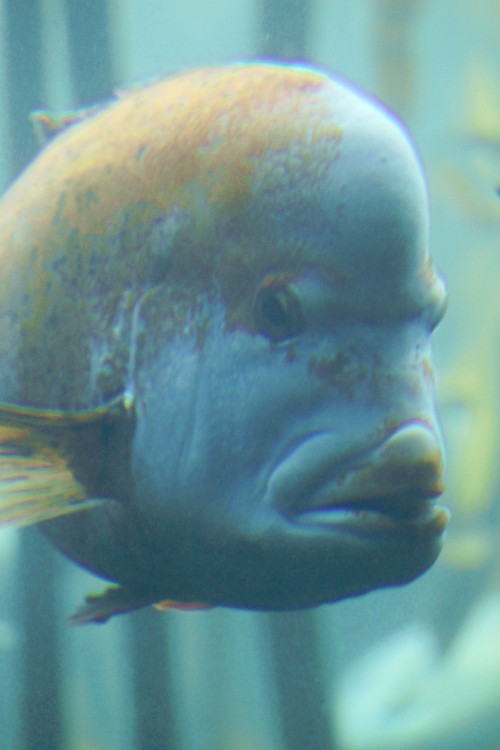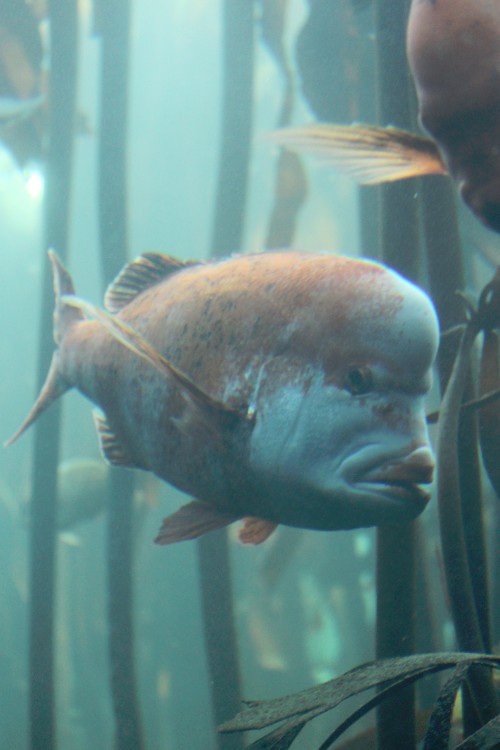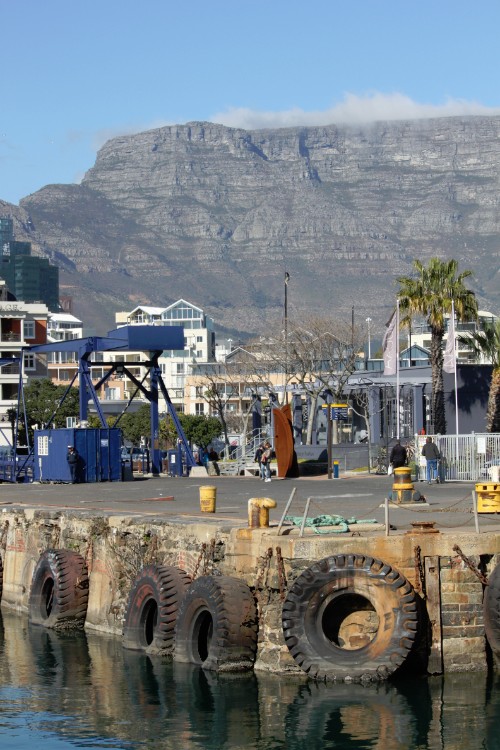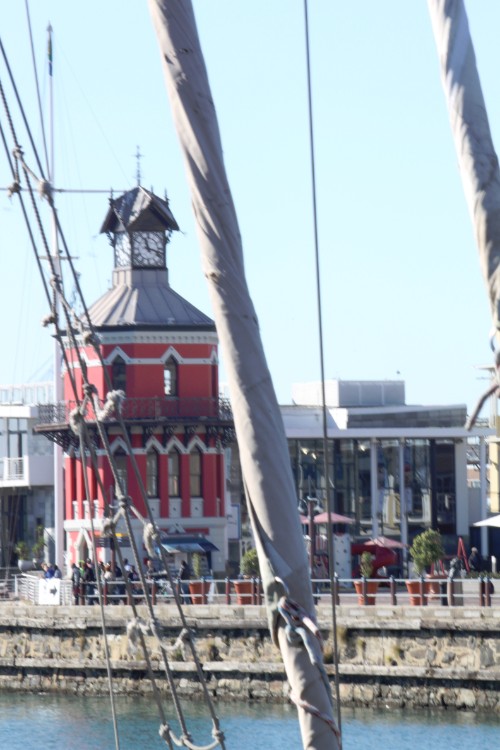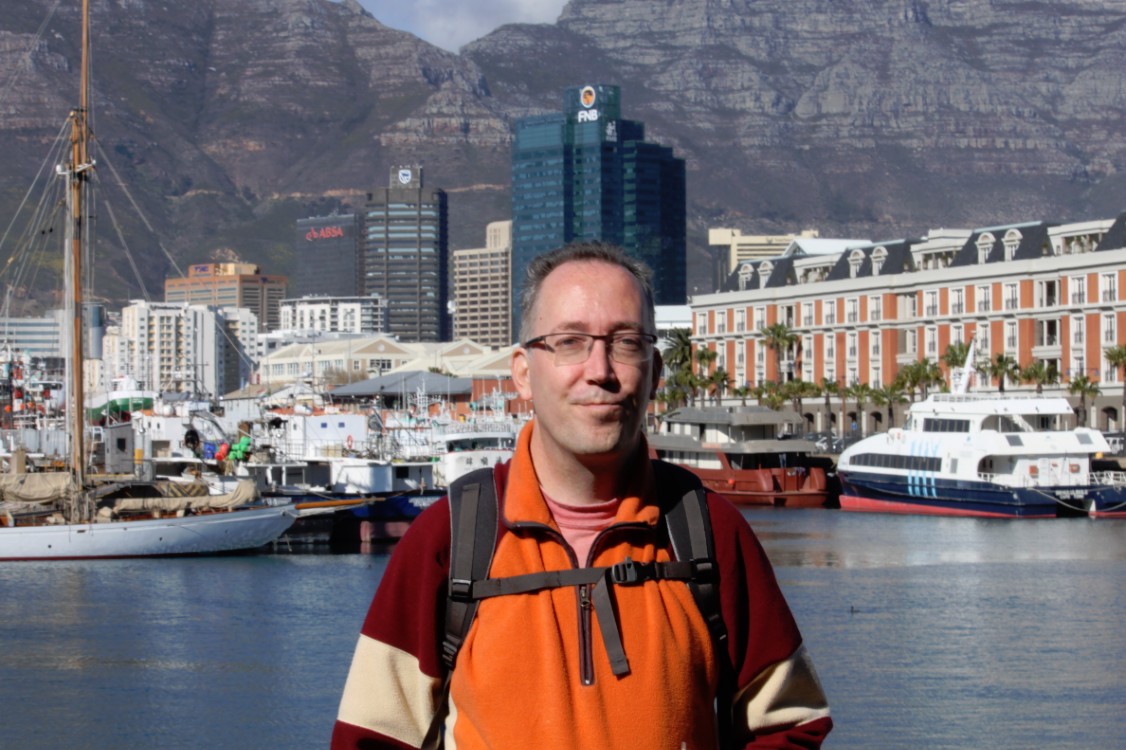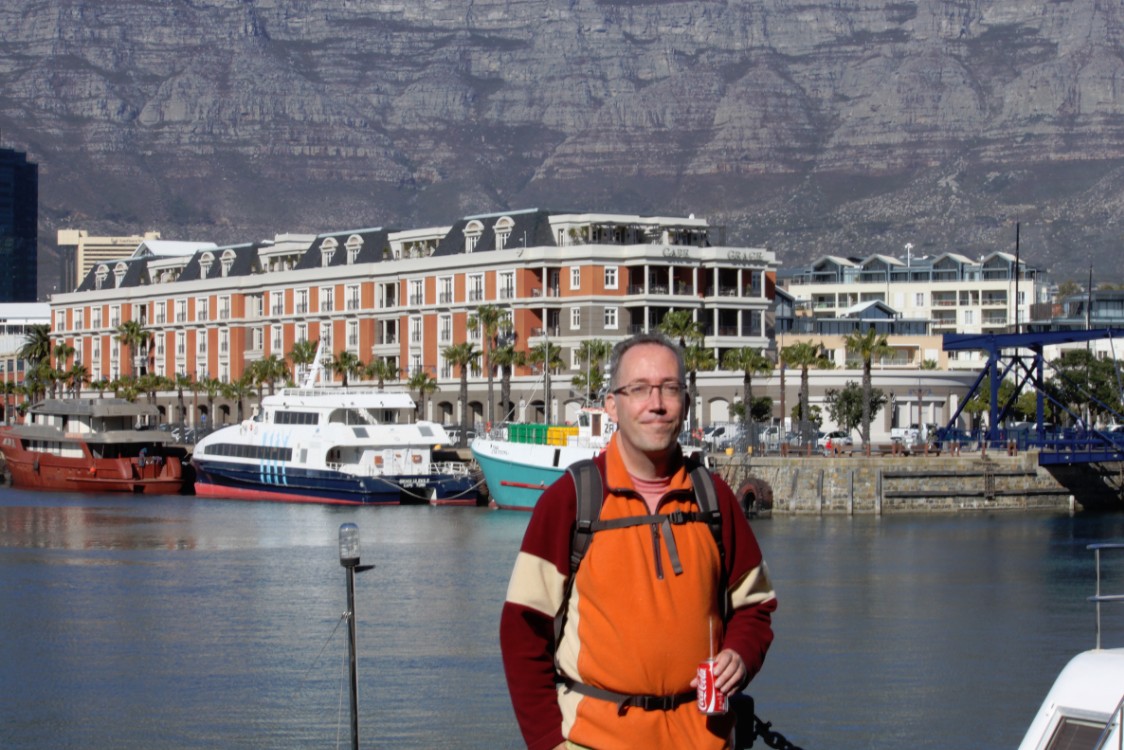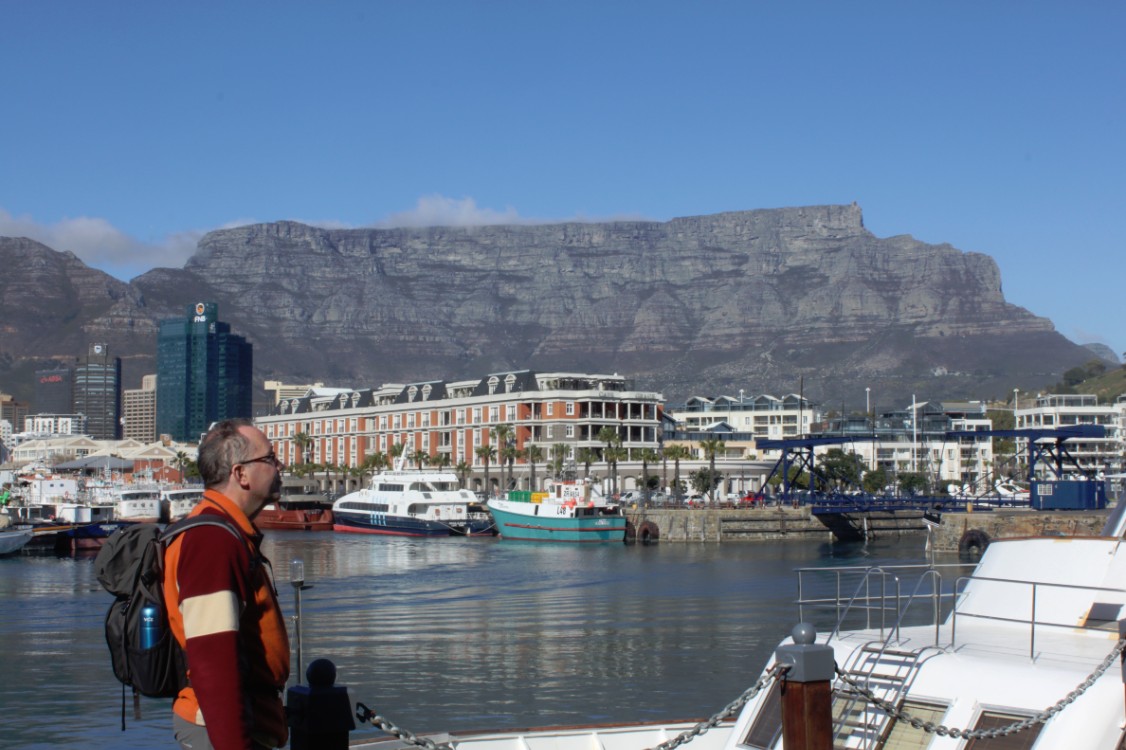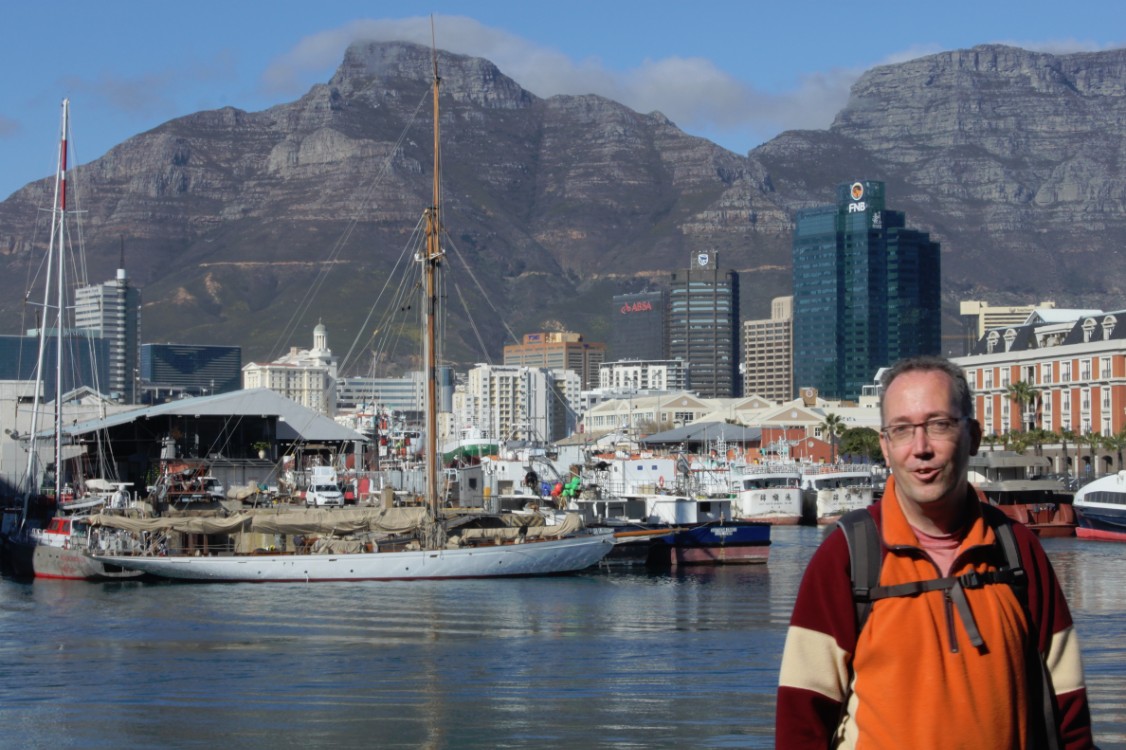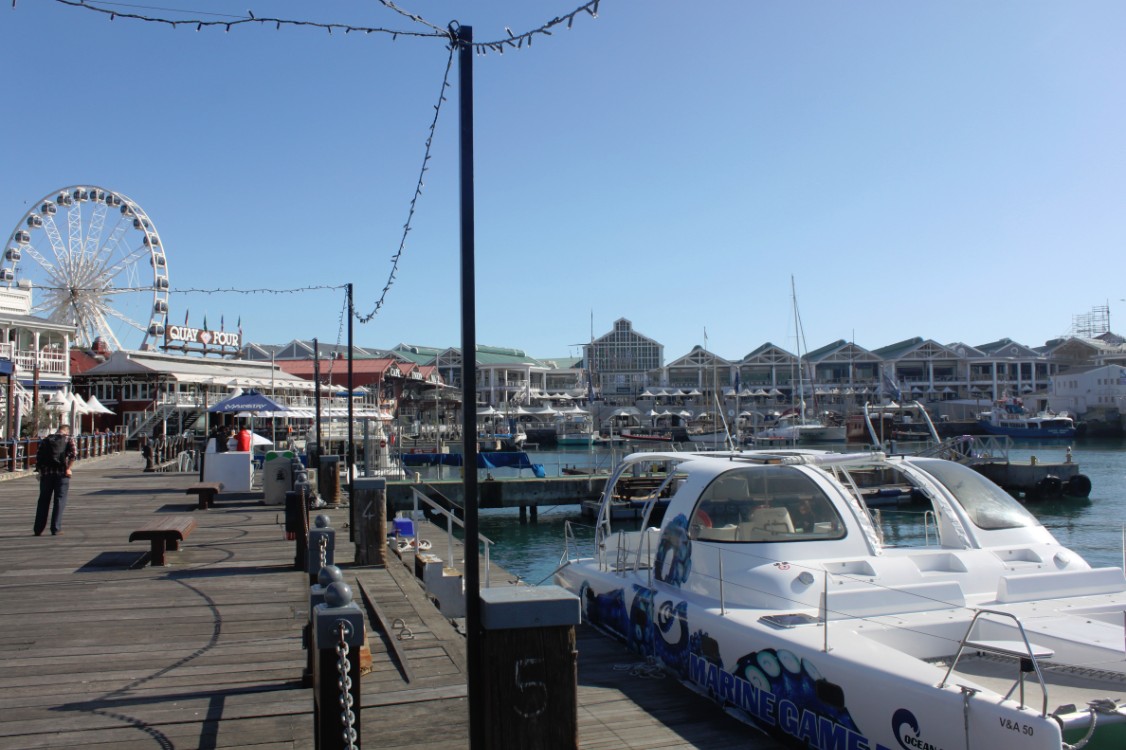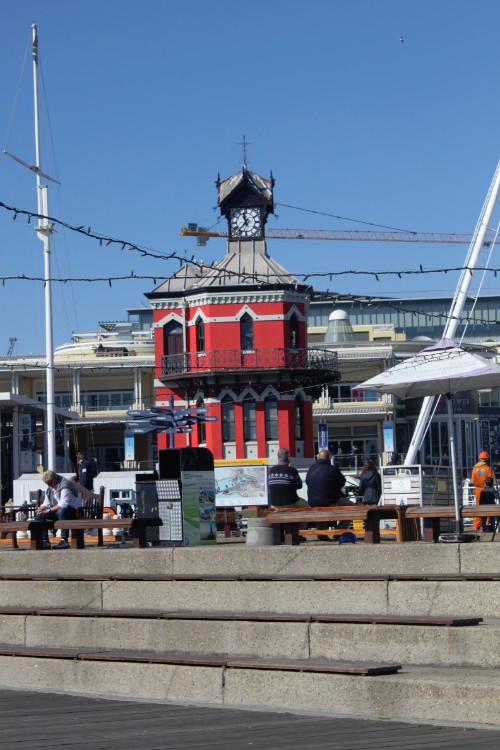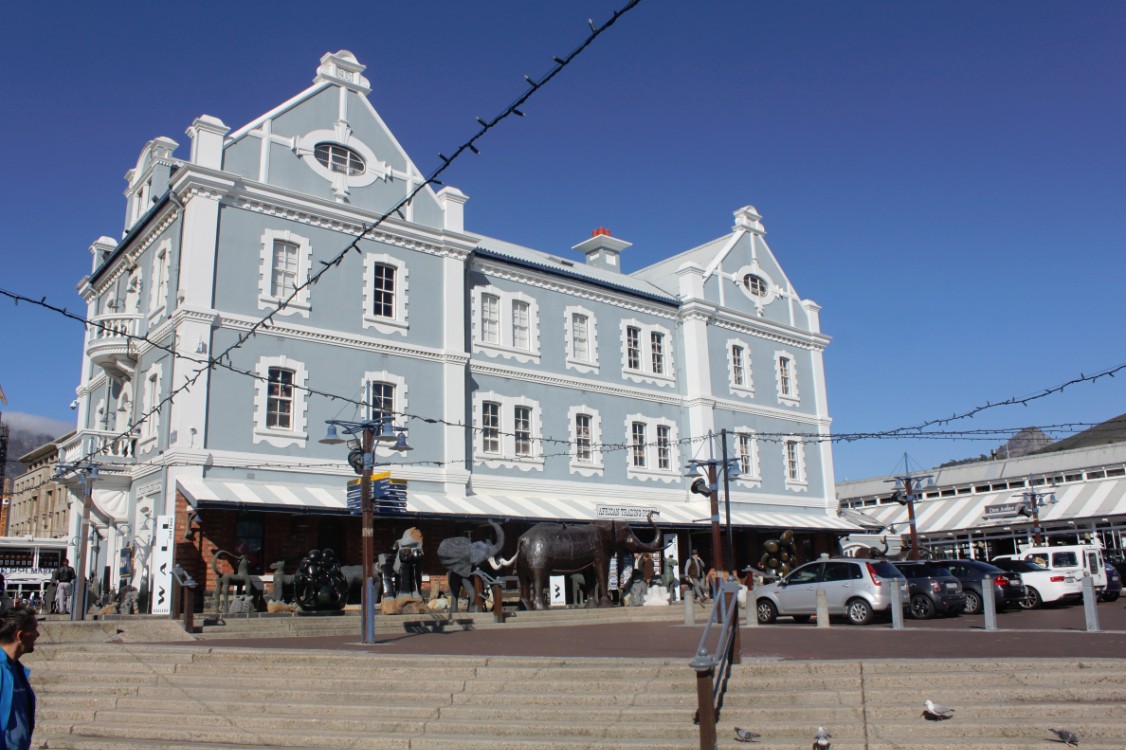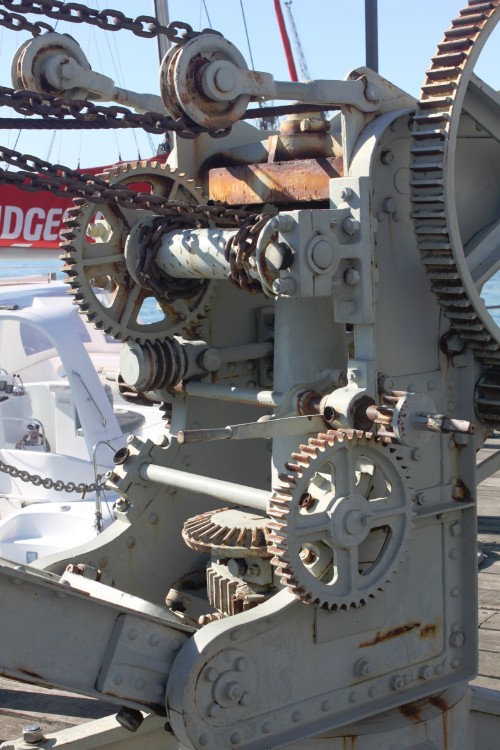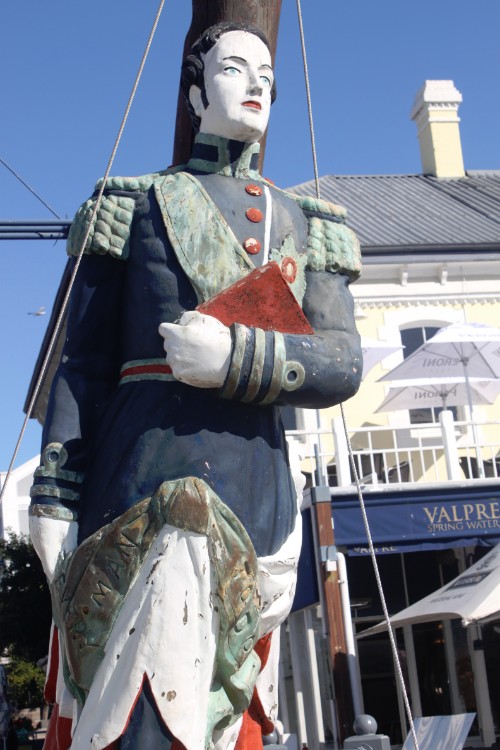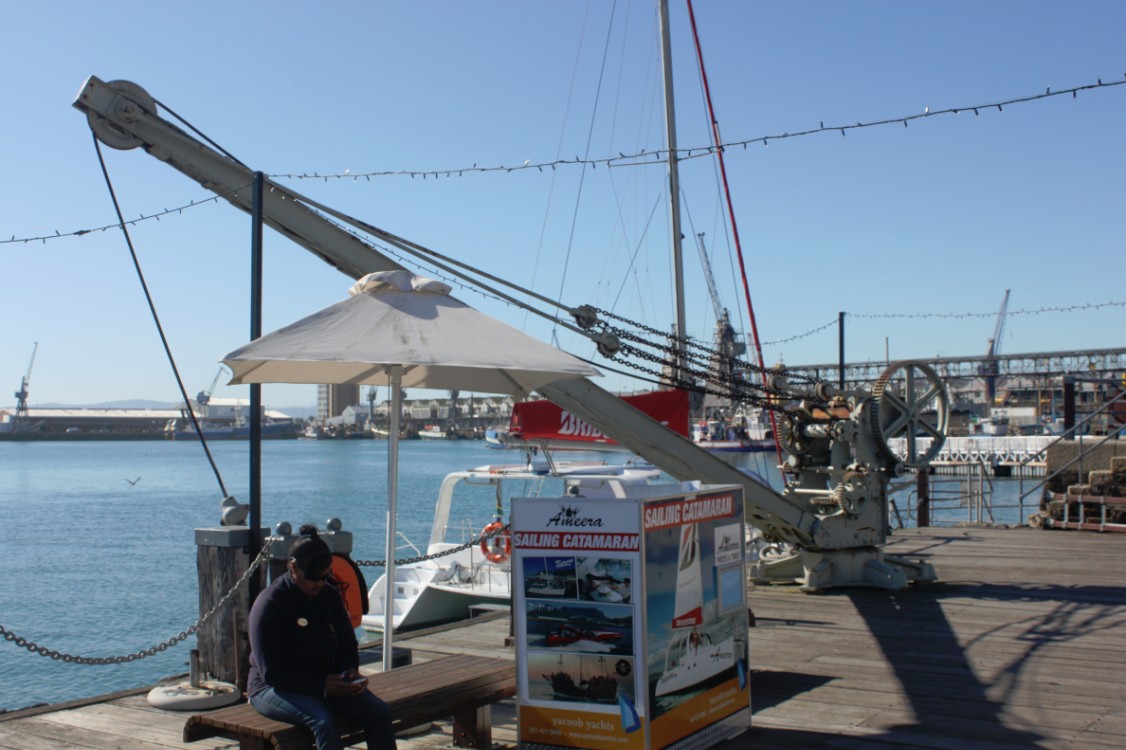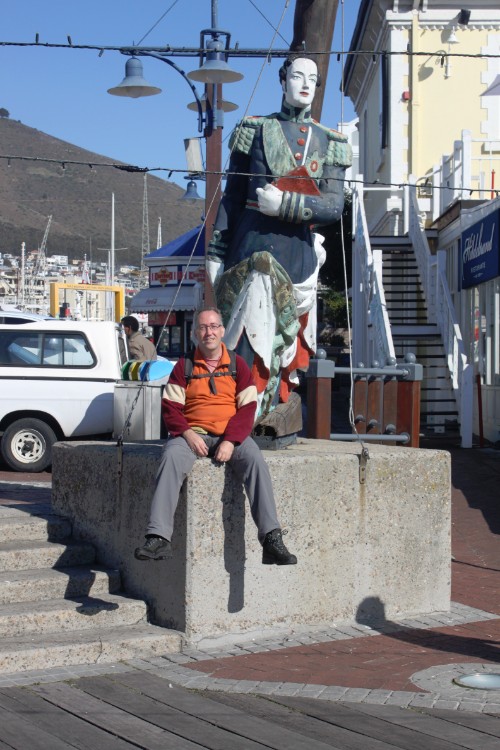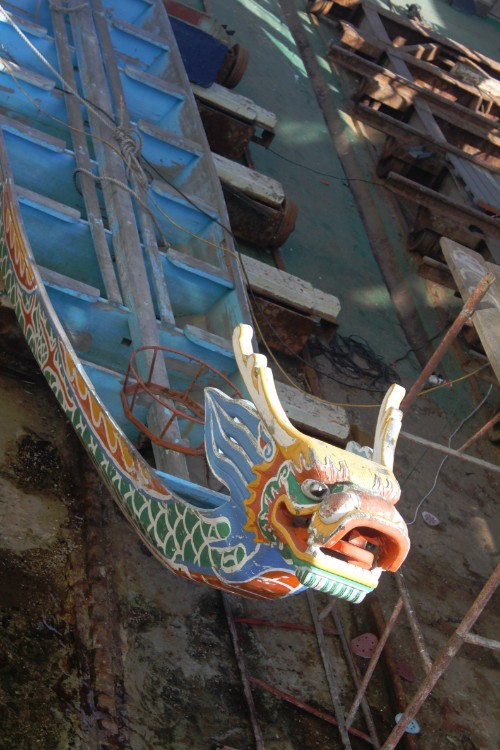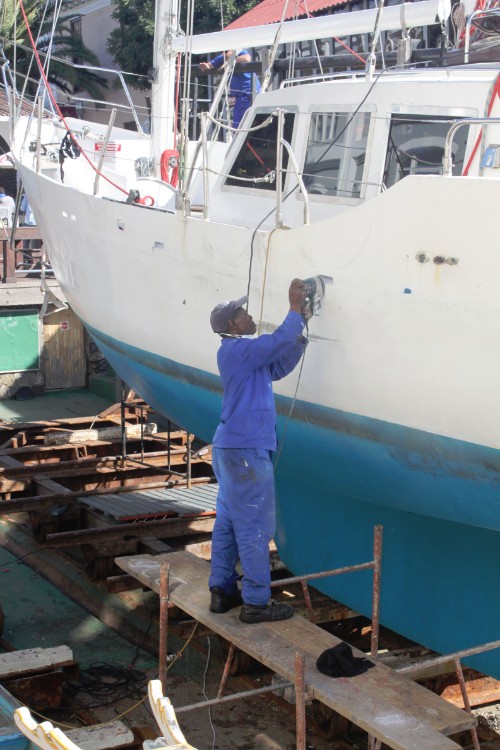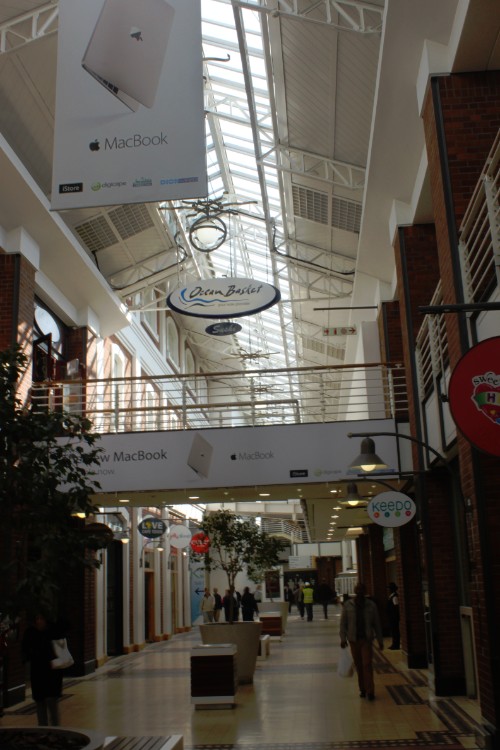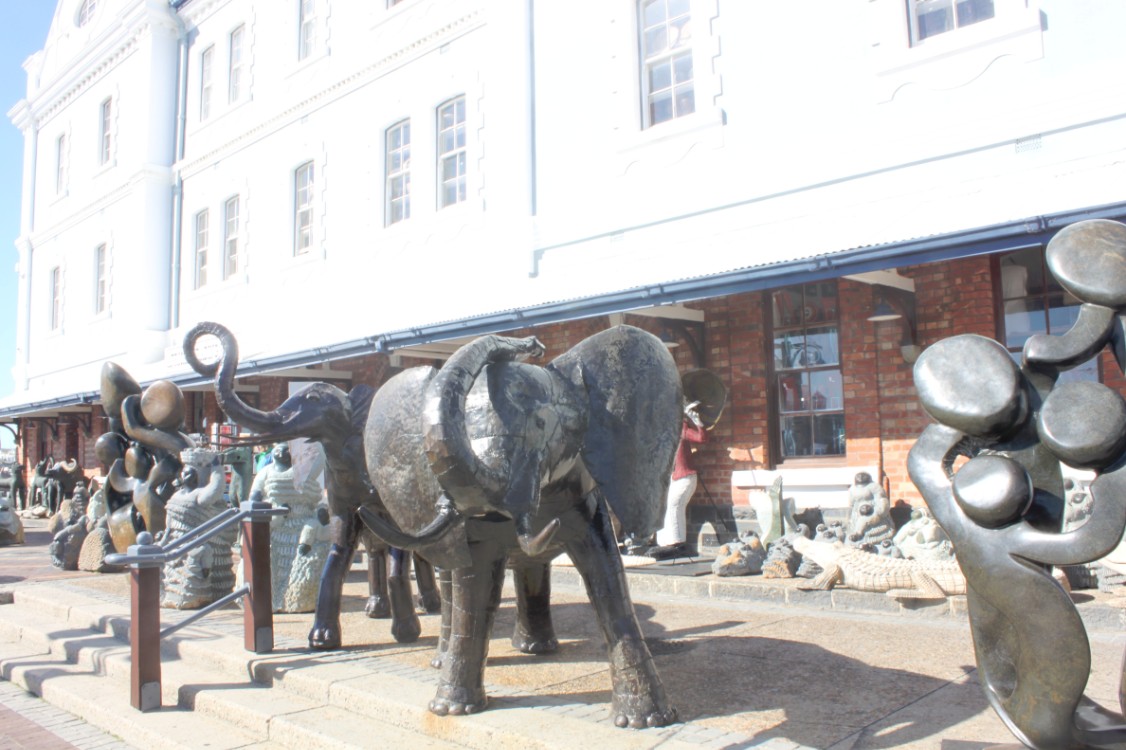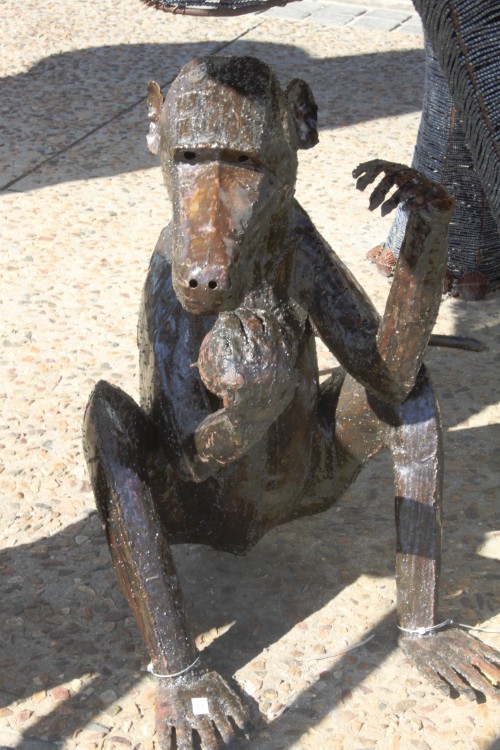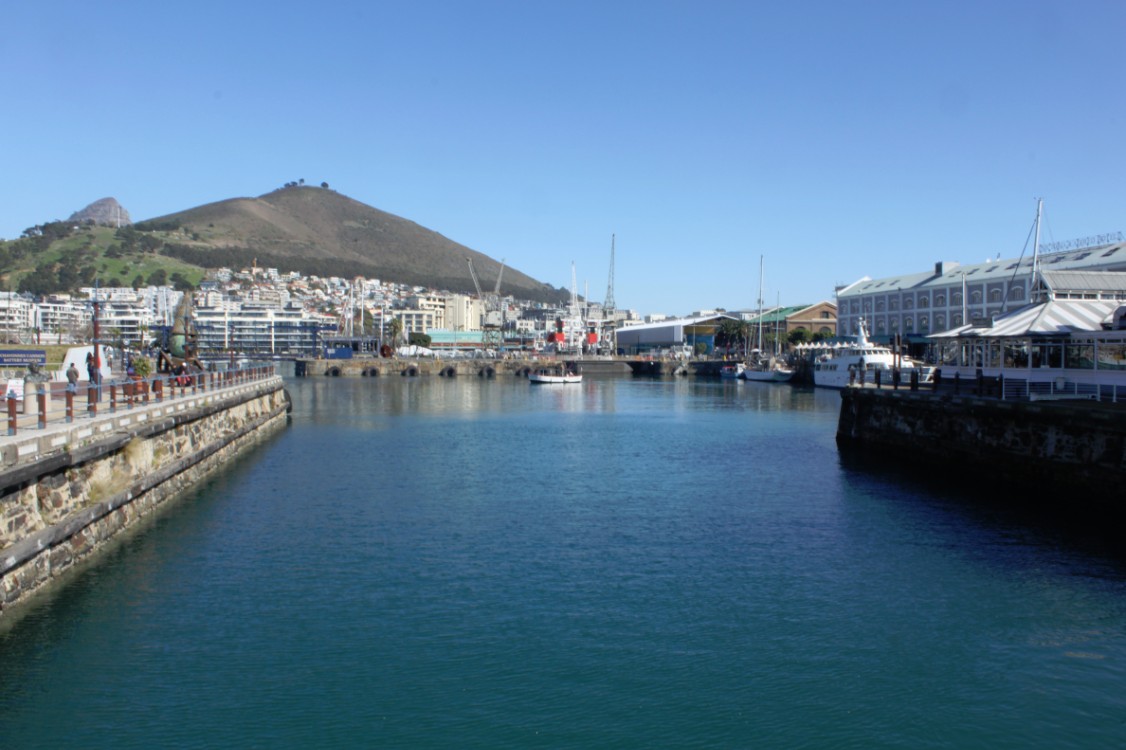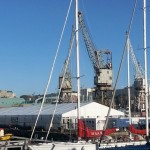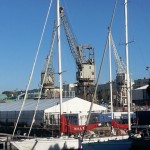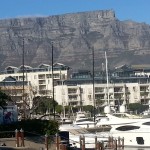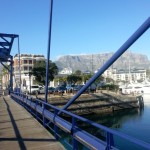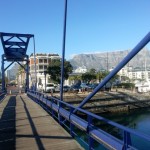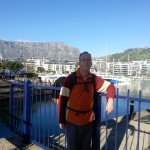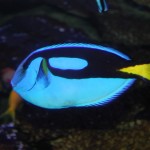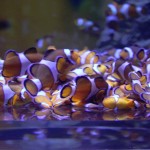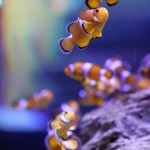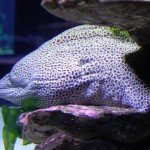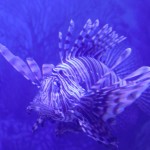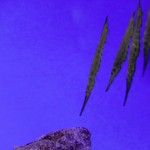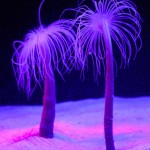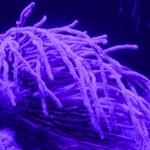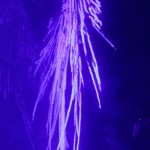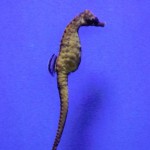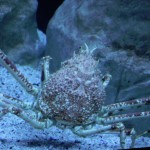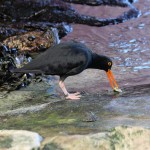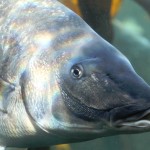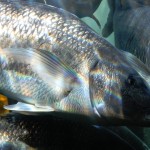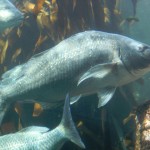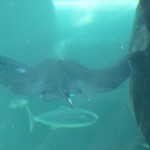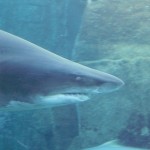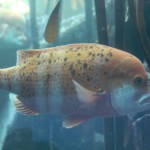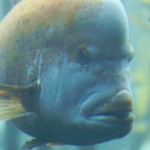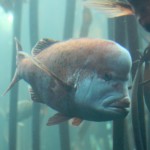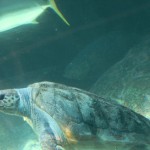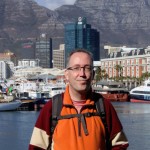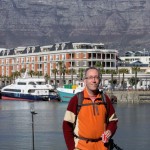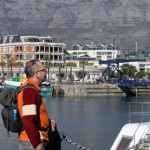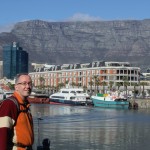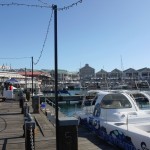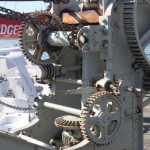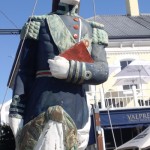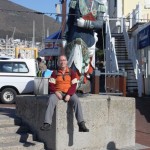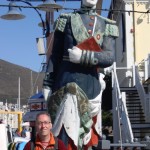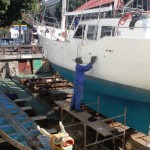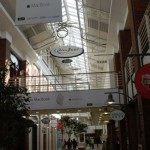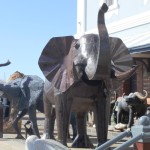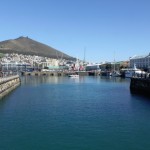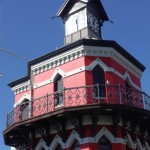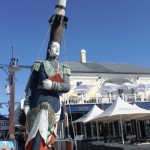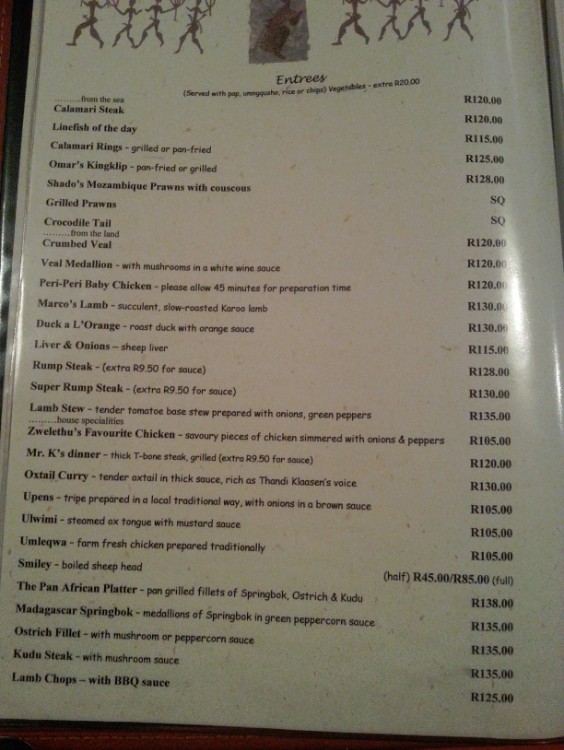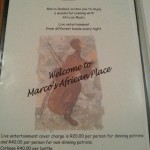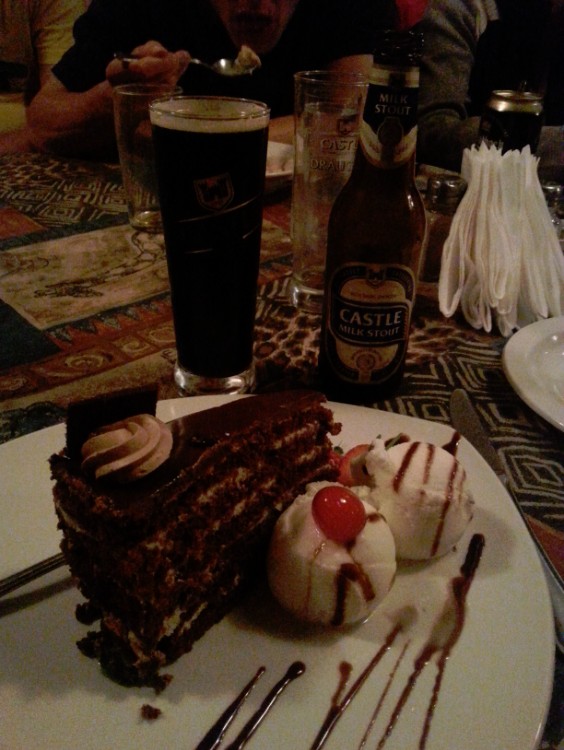1. South Africa – Capetown
Cape Town, the town in the extreme south of the African continent, the city that is so connected in its history with the Netherlands. In this city The Wandelgek began his long adventurous journey that ended deep in the interior of Southern Africa and would lead to the re-discovery of the “smoke that thunders”.
The Strand Tower hotel
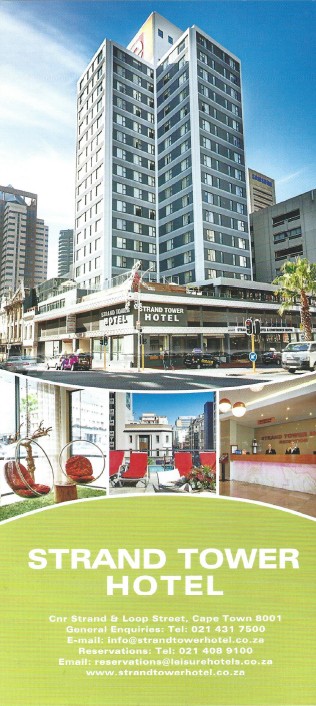
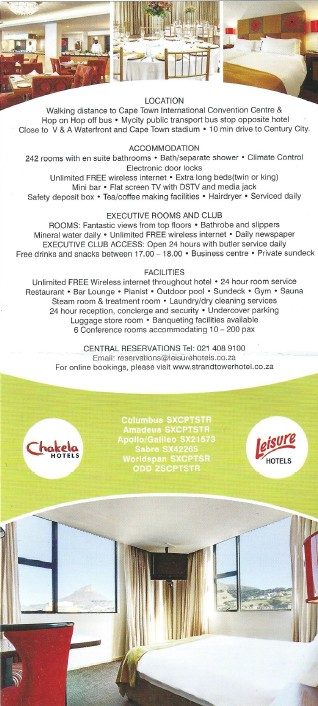
When we arrived in Cape Town we were picked up and dropped off at the Strand Tower hotel. Initially another hotel was booked but due to fire, water and smoke damage by reason of a fire in the building next to it, this hotel was no longer an option. Strand Tower was a great alternative and it turned out to be an upgrade compared to the other hotel. Here is an impression of my hotel room:
The first afternoon in Cape Town The Wandelgek spent at Table Mountain. The second day in Cape Town was mainly devoted to the long journey of about 60 kilometers to the Cape of Good Hope and back on the fantastic Cape Peninsula and the third and final day The Wandelgek spent on a morning visit to the Victoria and Alfred Waterfront and an afternoon visit to the illustrous Robben Island.
What The Wandelgek saw of Cape Town itself was limited to the beginning and end of the journey to Cape of Good Hope, where he drove twice through a major part of Cape Town and to the walk from the hotel to the Victoria and Alfred Waterfront.
The city is bustling. Much buildings are under construction and you’ll see a lot of construction workers on the street between 16:00 and 17:00 when the day shift ends. The city is a mix of shabby rundown neighborhoods, often with a rich history and neighborhoods where modern buildings are literally being pulled from the ground. Sometimes too fast. You can see for example the huge football stadium built for the World Cup in South Africa which nowadays is hardly used for sports anymore. The local football teams of Cape Town don’t play their matches in here, and it is only used for major music concerts.
The city is entirely nestled between the Atlantic Ocean and Table Mountain and some other mountain ranges. Even in the centre of Cape Town you’ll find mountains like the Lion’s Head and the Signal Tower, two high peaks connected by a ridge. Close to Cape Town are the Twelve Apostles which oversee a large part of the city.
However; you’ll notice a lot more of that special situation of Cape Town if you are actually going on top of Table Mountain or if you drive to the peninsula.
Dangers
In addition, the city also has something slightly dangerous / threatening, especially as the sun sets. Then you should not be here to hang out like a naive tourist. Don’t walk around allone after dark wearing your camera with large telephoto lens on your belly, but blend in ;-). Not that you’re not immediately recognized as a tourist by the locals.
The Wandelgek himself experienced the dangerous side of life in Cape Town when he was near his hotel and had been to a grocery store (Pick & Pay) to purchase some Biltong. After having payed for the groceries, the Wandelgek left the supermarket and walked through a long covered corridor part of the mall where the store was located. At the height of a wide staircase down to the mall’s garage, he was tapped on the back and asked whether he wanted to show the cash register receipt. Because he was uncertain as to the purpose and not sure which official job function the interviewer had, he did. Then the man indicated that one of the barcodes might have a lucky lottery prize attached to it. Thus The Wandelgek was asked to come along to check the number on the list of prize winners, but it had to happen in that basement garage. No way! The Wandelgek refused, and when the man was tenacious, he decided to invite him to go to the cashier at the supermarket to check his story. No, that was not necessary. Go check it yourself but then come downstairs, he said. And he was gone. So to be completely sure I didcheck with the cashier who did not seem to understand the lottery story and than a shopping lady said not to go to the garage. “They’re trying to rob you!”
Moments later I was again approached by someone out on the street who wanted to be my friend. Than suddenly he asked whether I was a guest in the Sand Towers hotel. Hmmm. Apparently, the hotel is well monitored regarding tourists.
But apart from these adventures which are easily avoided with a not to naive attitude, Cape Town is a wonderful city to wander around and there is plenty of fun things to sight see.
Africa’s biggest tourist trap
It struck me that the Eyewitness travel guide of South Africa only spent two to four pages on Pretoria, Johannesburg, Bloemfontein and Durban each, but on Cape Town 64 pages were spent. A sign on the wall?
Ask yourself the next question: What is Africa’s largest tourist attraction or tourist trap in terms of amounts of visitors (not South Africa, but Africa)?
- The pyramids of Egypt;
- The national parks such as Serengeti, Ngorongoro and Kruger;
- Victoria Falls;
- The ancient royal cities of Marrokko (Marrakech and Fez);
- Zanzibar.
You already know the answer?
Yeah dream on!…
Answer: A shopping mall in Cape Town …
The Victoria and Alfred Waterfront
On the third day in Cape Town The Wandelgek spent the morning at the Victoria and Alfred Waterfront.
Imagine a harbor environment at the Table Bay with virtually everywhere the inevitable views on Table Mountain. Then imagine that there are well-guarded, high fenced neighborhoods with modern houses, often in bright white color and situated besides small channels. The public part of the quay consists of the most luxurious hotels in Cape Town where all the rooms have views on Table Mountain and the harbor and lovely terraces and luxury shops including even a real outdoor retailer. This was useful because in the evening and at night it was so cold that extra gloves had to be purchased.
Additionally there is the huge Victoria Wharf Shopping Center filled with exclusive shops and many stalls to eat and drink. The huge hall must once have been giving shelter to shipbuilding.
After a brief visit to the Wharf, The Wandelgek went to the Two Oceans Acquarium. This was definitely worth it. There are habitats recreated from the areas of the Atlantic and Indian Ocean, which both collide at Cape Town. There is also a kind of semi glass tunnel through which you walk seeing behind the glass: manta rays, sharks, turtles and huge amounts of fish. Really a must visit e.g. in bad weather! For children there is plenty to do like a shallow water tank where you can touch all kinds of underwater animals and plants.
Eat
In Cape Town at evening and night you can find excellent food and drinks, especially in the restaurants with live music and the real African cuisine which serves dishes ranging from wild impala and springbok to crocodile and ostrich. The musical accompaniment of the dinner consists mostly of African song, dance and drum music.Usually pretty loud so conversation is more difficult and performance is not always well.
Drinking beer
But hey relax and drink a beer. As a beer lover, The Wandelgek, really liked South Africa. The most famous South African beer brand is Castle, which is also sold in many other African countries. They sell a fine Lager (beer family where the pilsner belongs to) but if you ever want to drink something special as I usually do, try the Castle Milk Stout …
Cape Town
Cape Town (Afrikaans: Kaapstad [ˈkɑːpstɐt]; Xhosa: Ikapa) ranks second among the most populous urban areas in South Africa, after Johannesburg, and has roughly the same population as the Durban Metropolitan Area. It is also the provincial capital and primate city of the Western Cape.
As the seat of the National Parliament, it is also the legislative capital of the country. It forms part of the City of Cape Town metropolitan municipality. The city is famous for its harbour, for its natural setting in the Cape Floristic Region, as well as for such well-known landmarks as Table Mountain and Cape Point. As of 2014 it is the 10th most populous city in Africa and home to 64% of the Western Cape’s population. It is one of the most multicultural cities in the world, reflecting its role as a major destination for immigrants and expatriates to South Africa. The city was named the World Design Capital for 2014 by the International Council of Societies of Industrial Design. In 2014, Cape Town was named the best place in the world to visit by both The New York Times and The Telegraph.
Located on the shore of Table Bay, Cape Town was first developed by the Dutch East India Company as a victualling (supply) station for Dutch ships sailing to East Africa, India, and the Far East. Jan van Riebeeck’s arrival on 6 April 1652 established the first permanent European settlement in South Africa. Cape Town quickly outgrew its original purpose as the first European outpost at the Castle of Good Hope, becoming the economic and cultural hub of the Cape Colony. Until the Witwatersrand Gold Rush and the development of Johannesburg, Cape Town was the largest city in South Africa.
History
The earliest known remnants in the region were found at Peers cave in Fish Hoek and date to between 15,000 and 12,000 years ago. Little is known of the history of the region’s first residents, since there is no written history from the area before it was first mentioned by Portuguese explorer Bartolomeu Dias in 1486. Vasco da Gama recorded a sighting of the Cape of Good Hope in 1497. In the late 16th century, Portuguese, French, Danish, Dutch and English ships regularly stopped over in Table Bay en route to the Indies. They traded tobacco, copper and iron with the Khoikhoi in exchange for fresh meat. In 1652, Jan van Riebeeck and other employees of the Dutch East India Company (Dutch: Verenigde Oost-indische Compagnie, VOC) were sent to the Cape to establish a way-station for ships travelling to the Dutch East Indies, and the Fort de Goede Hoop (later replaced by the Castle of Good Hope). The settlement grew slowly during this period, as it was hard to find adequate labour. This labour shortage prompted the authorities to import slaves from Indonesia and Madagascar. Many of these became ancestors of the first Cape Coloured communities. Under Van Riebeeck and his successors as VOC commanders and later governors at the Cape, an impressive range of useful plants were introduced to the Cape – in the process changing the natural environment forever. Some of these, including grapes, cereals, ground nuts, potatoes, apples and citrus, had an important and lasting influence on the societies and economies of the region.
During the French Revolutionary and Napoleonic wars, the Netherlands was repeatedly occupied by France, and Great Britain moved to take control of Dutch colonies. Britain captured Cape Town in 1795, but the Cape was returned to the Netherlands by treaty in 1803. British forces occupied the Cape again in 1806 following the battle of Bloubergstrand. In the Anglo-Dutch Treaty of 1814, Cape Town was permanently ceded to Britain. It became the capital of the newly formed Cape Colony, whose territory expanded very substantially through the 1800s. With expansion, came calls for greater independence from Britain, with the Cape attaining its own parliament in 1854, and a locally accountable Prime Minister in 1872. Suffrage was established according to the non-racial, but sexist Cape Qualified Franchise.
The discovery of diamonds in Griqualand West in 1867, and the Witwatersrand Gold Rush in 1886, prompted a flood of immigrants to South Africa. Conflicts between the Boer republics in the interior and the British colonial government resulted in the Second Boer War of 1899–1902, which Britain won. In 1910, Britain established the Union of South Africa, which unified the Cape Colony with the two defeated Boer Republics and the British colony of Natal. Cape Town became the legislative capital of the Union, and later of the Republic of South Africa.
In the 1948 national elections, the National Party won on a platform of apartheid (racial segregation) under the slogan of “swart gevaar”. This led to the erosion and eventual abolition of the Cape’s multiracial franchise, as well as to the Group Areas Act, which classified all areas according to race. Formerly multi-racial suburbs of Cape Town were either purged of unlawful residents or demolished. The most infamous example of this in Cape Town was District Six. After it was declared a whites-only region in 1965, all housing there was demolished and over 60,000 residents were forcibly removed. Many of these residents were relocated to the Cape Flats and Lavender Hill. Under apartheid, the Cape was considered a “Coloured labour preference area”, to the exclusion of “Bantus”, i.e. Africans
School students from Langa, Gugulethu and Nyanga in Cape Town reacted to the news of protests against Bantu Education in Soweto in June 1976 and organised gatherings and marches which were met with resistance from the police. A number of school buildings were burnt down.
Cape Town was home to many leaders of the anti-apartheid movement. On Robben Island, a former penitentiary island 10 kilometres (6 miles) from the city, many famous political prisoners were held for years. In one of the most famous moments marking the end of apartheid, Nelson Mandela made his first public speech since his imprisonment, from the balcony of Cape Town City Hall hours after being released on 11 February 1990. His speech heralded the beginning of a new era for the country, and the first democratic election, was held four years later, on 27 April 1994. Nobel Square in the Victoria & Alfred Waterfront features statues of South Africa’s four Nobel Peace Prize winners: Albert Luthuli, Desmond Tutu, F. W. de Klerk and Nelson Mandela. Since 1994, the city has struggled with problems such as drugs, a surge in violent drug-related crime and more recently gang violence. At the same time, the economy has surged to unprecedented levels due to the boom in the tourism and the real estate industries. With a Gini coefficient of 0.67, Cape Town has the highest rate of equality in South Africa.



